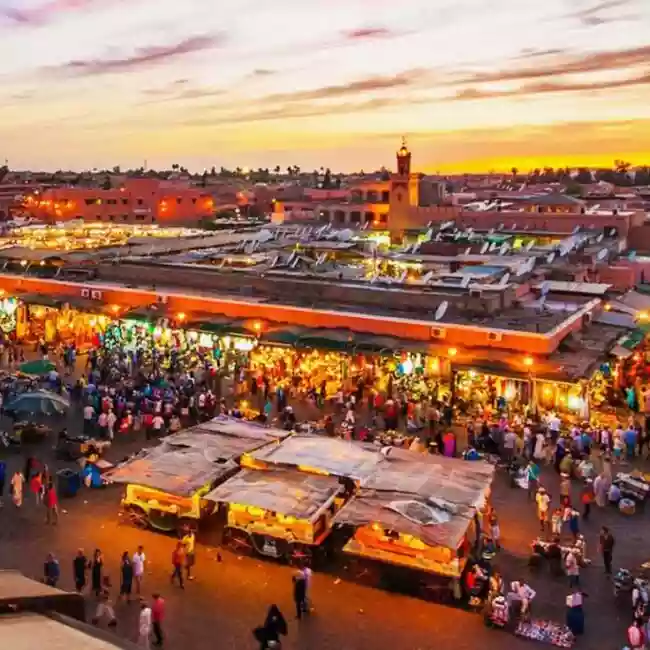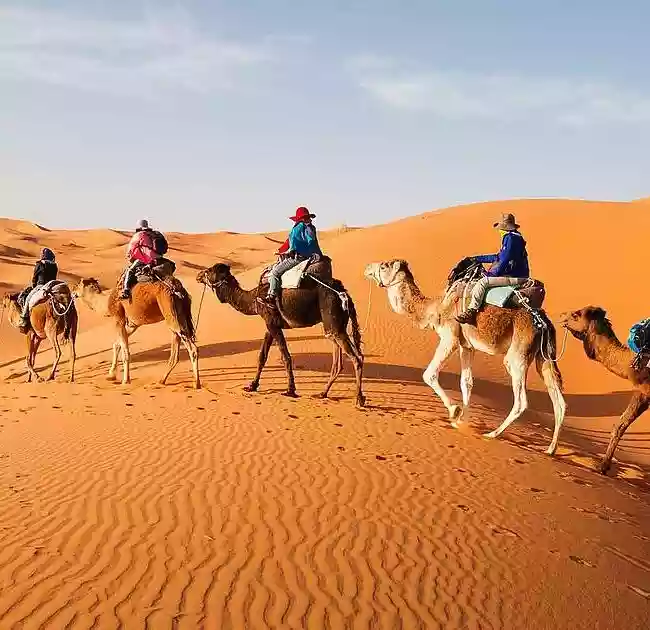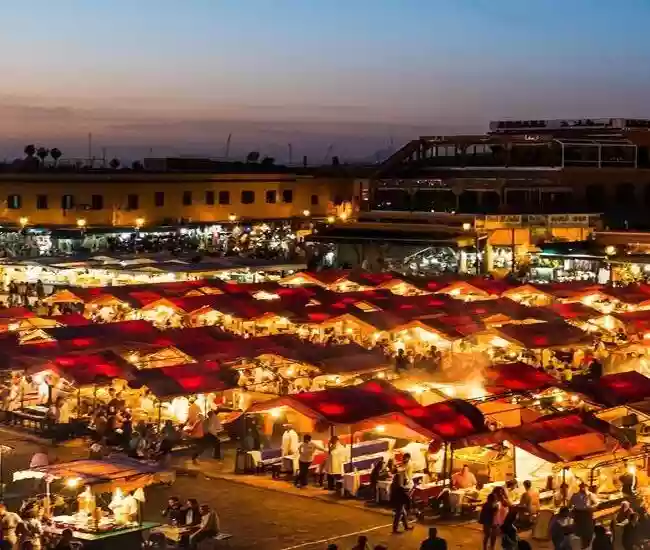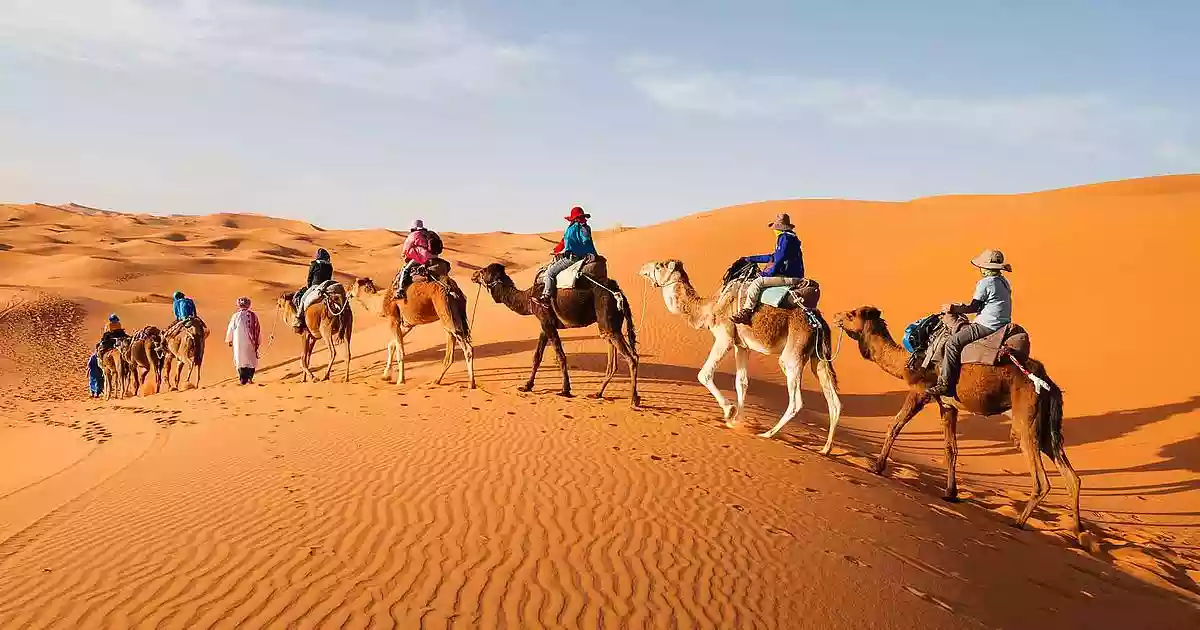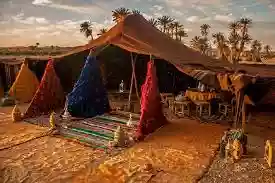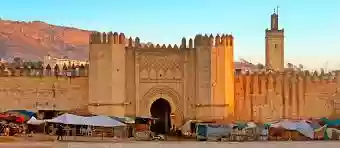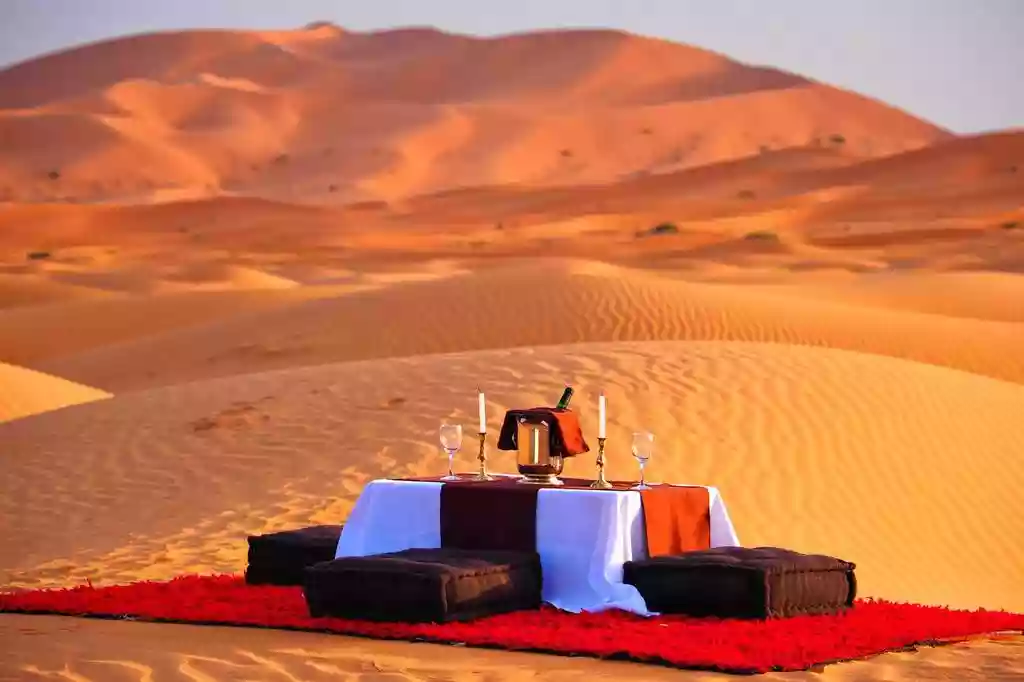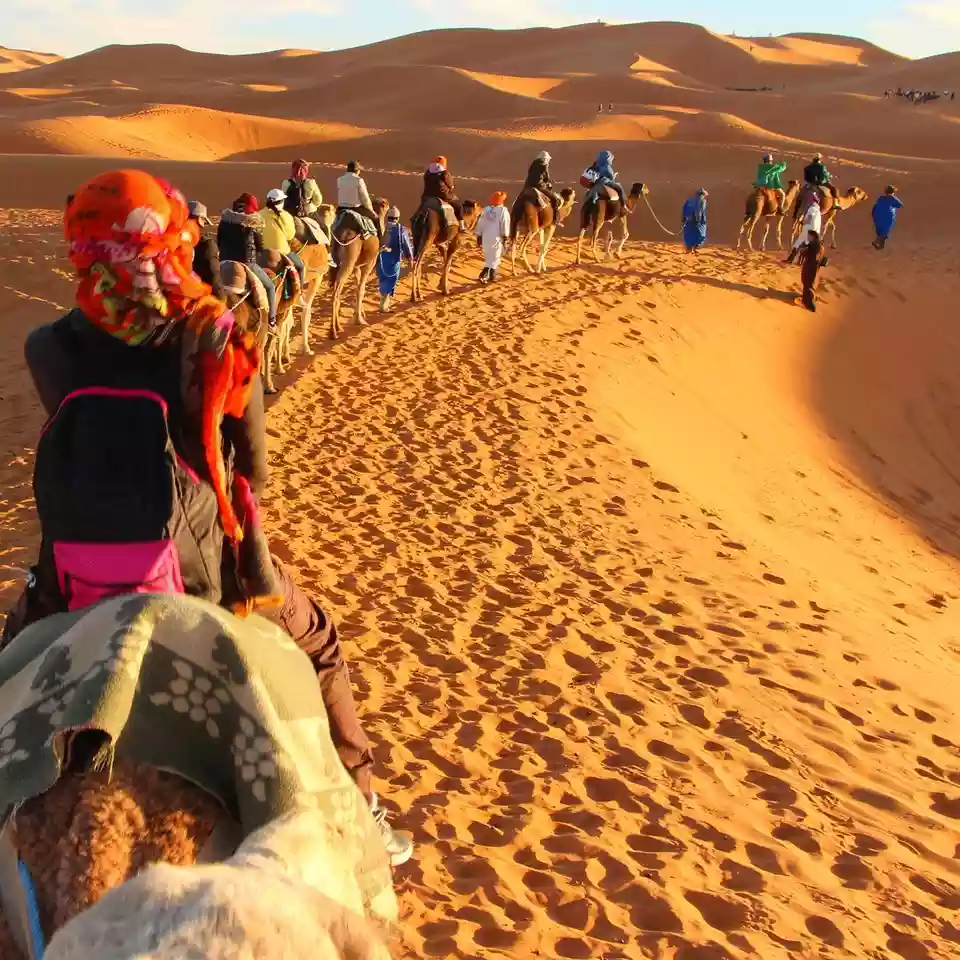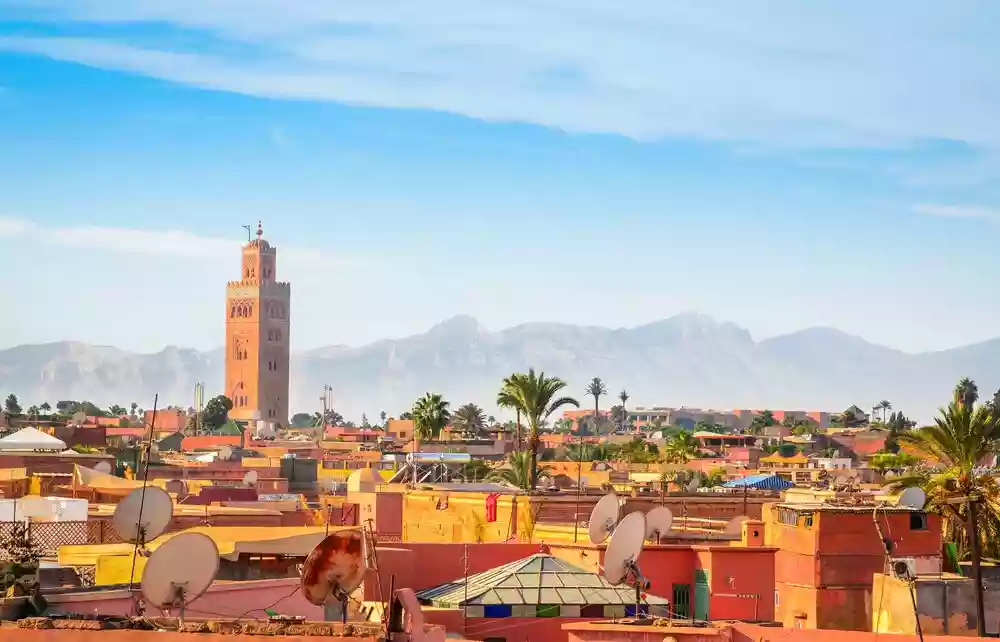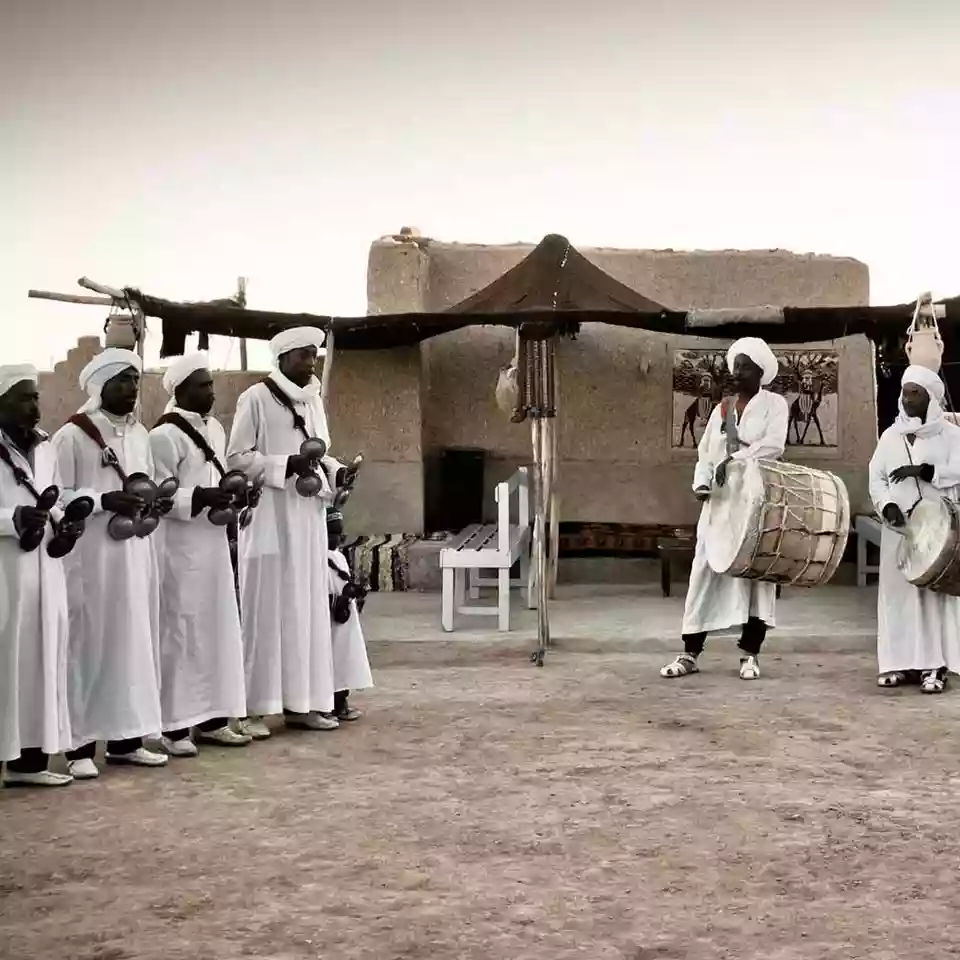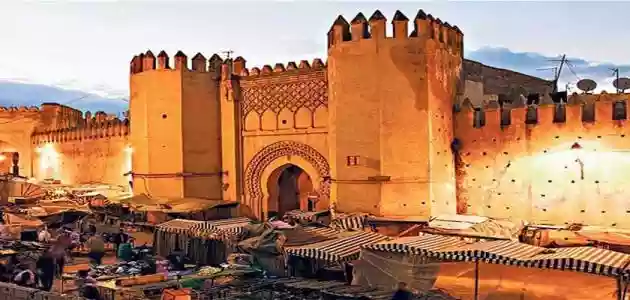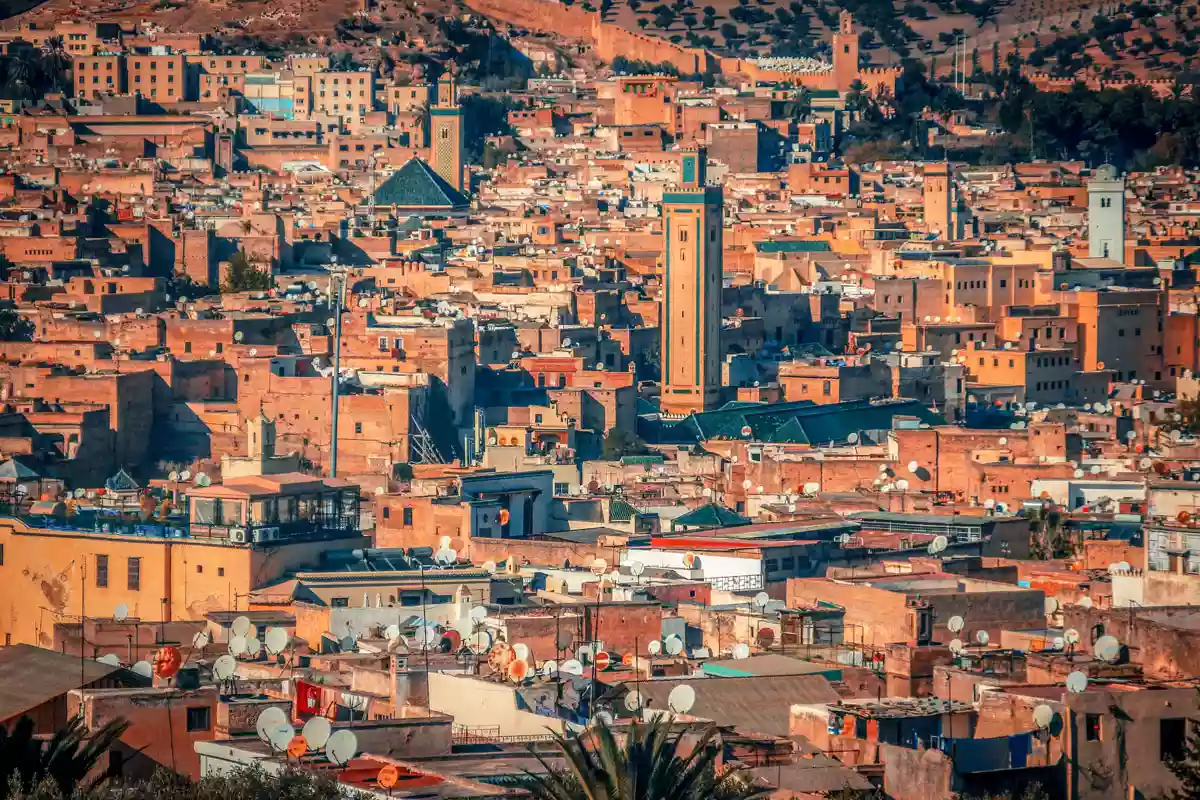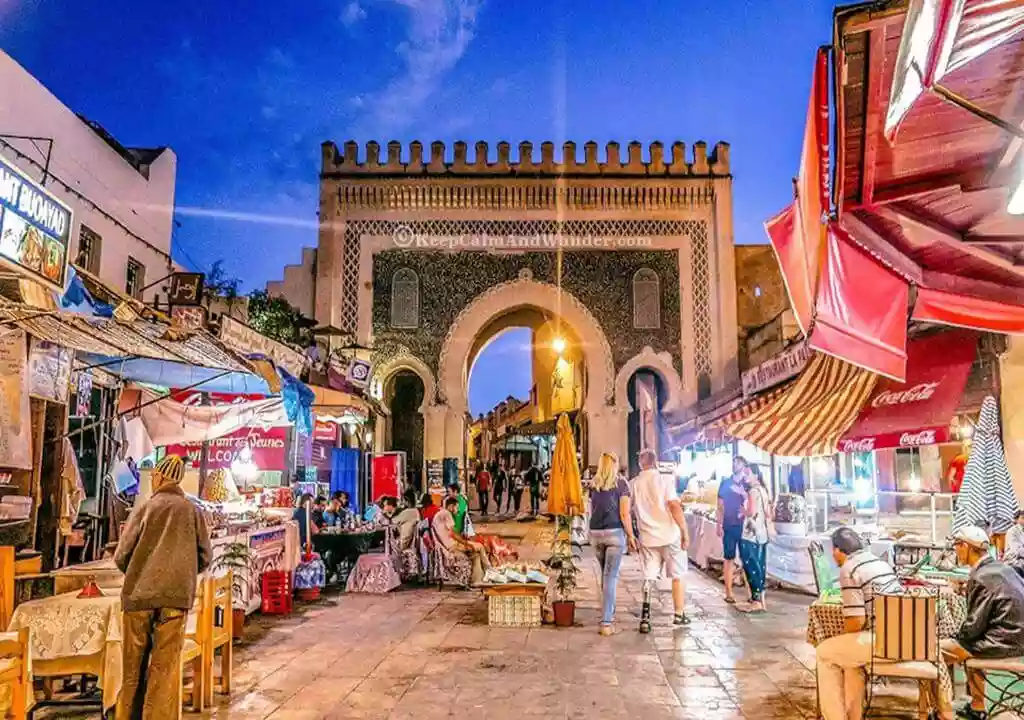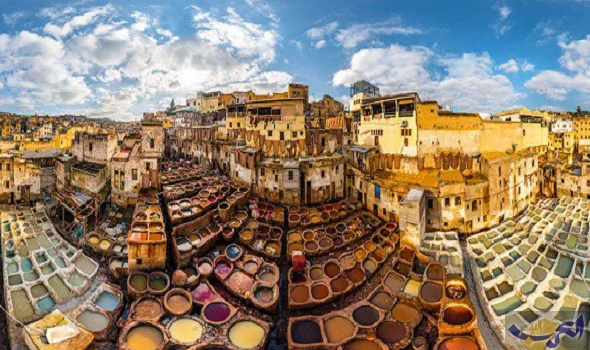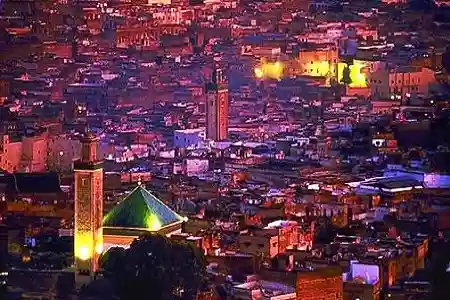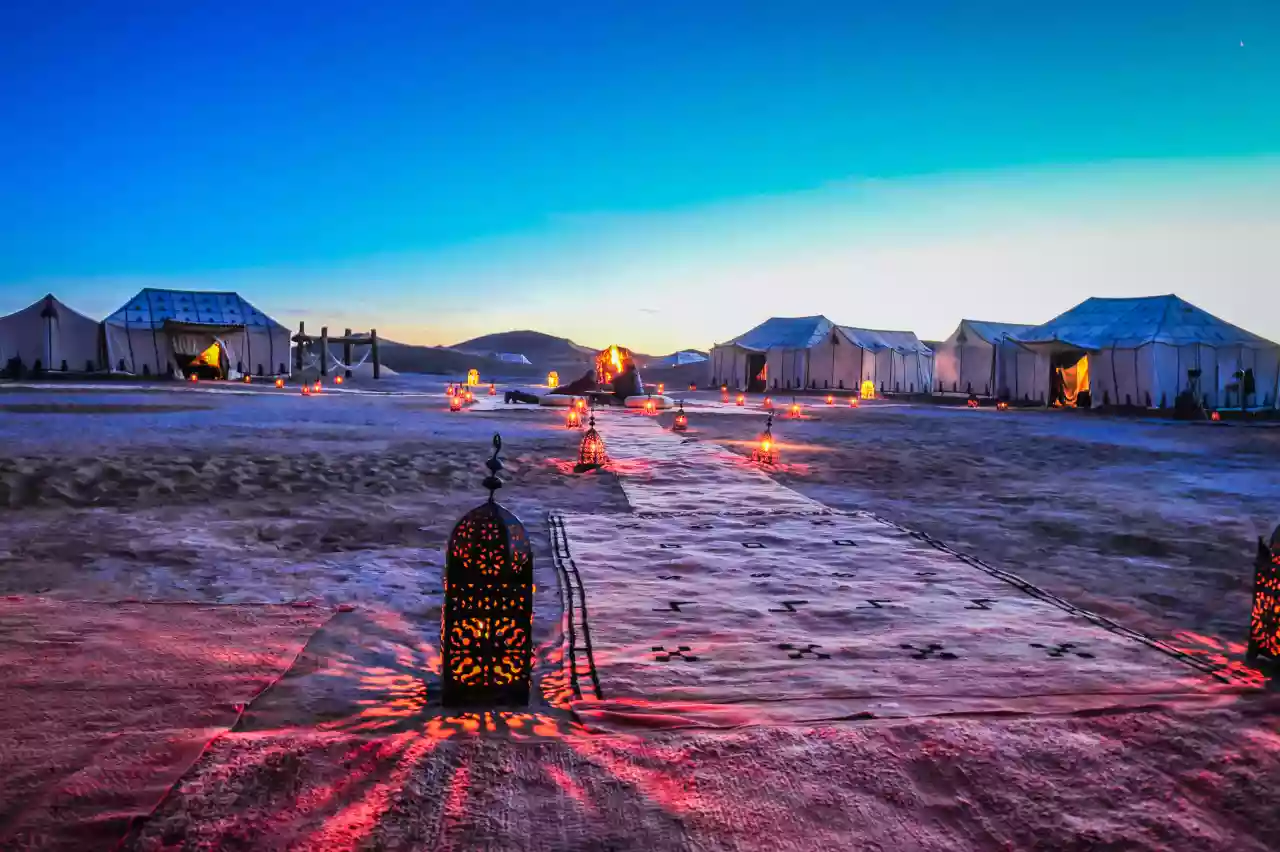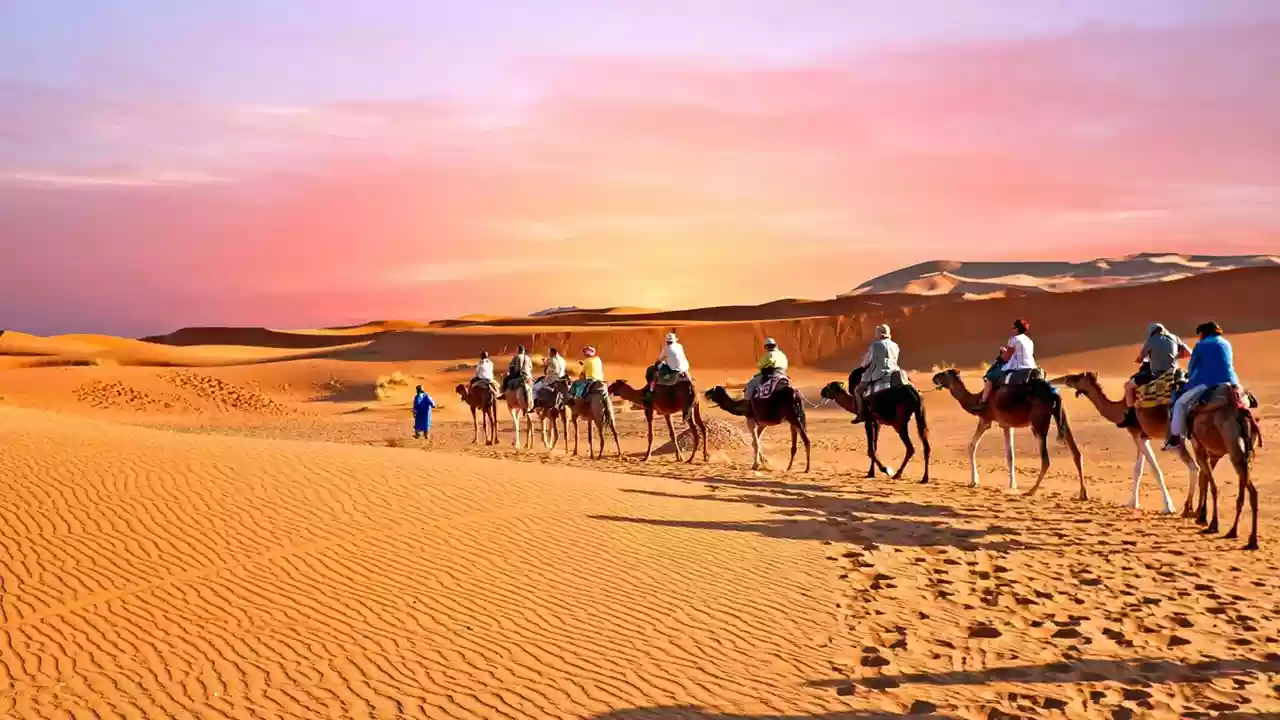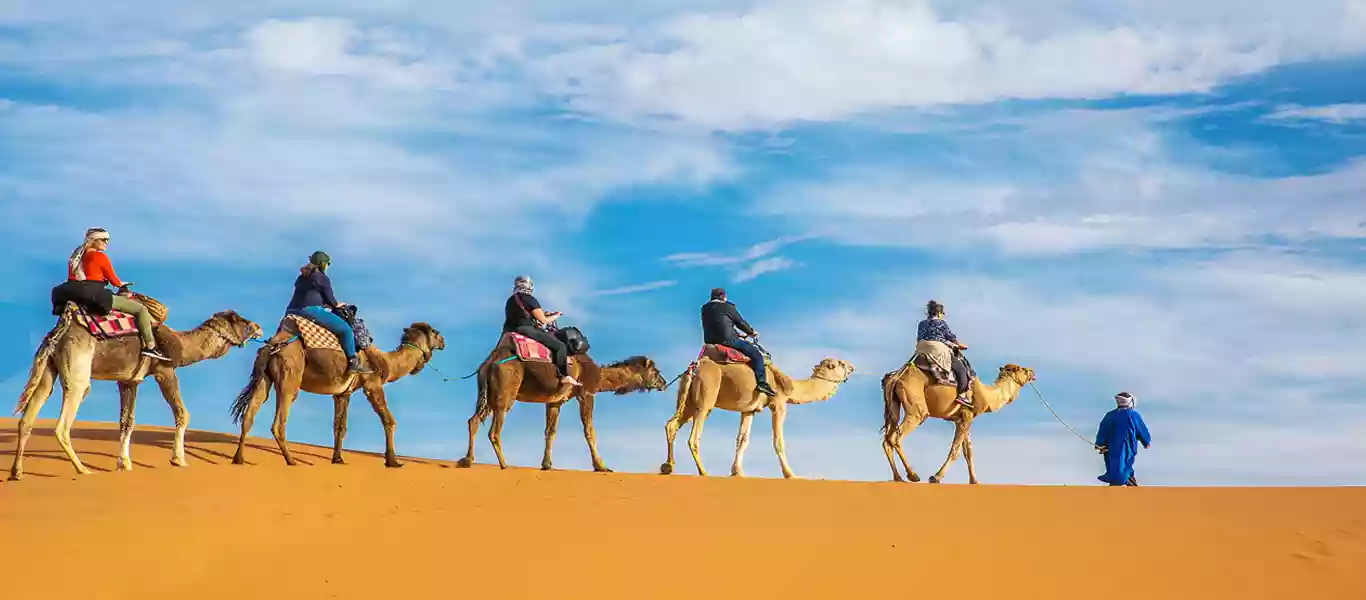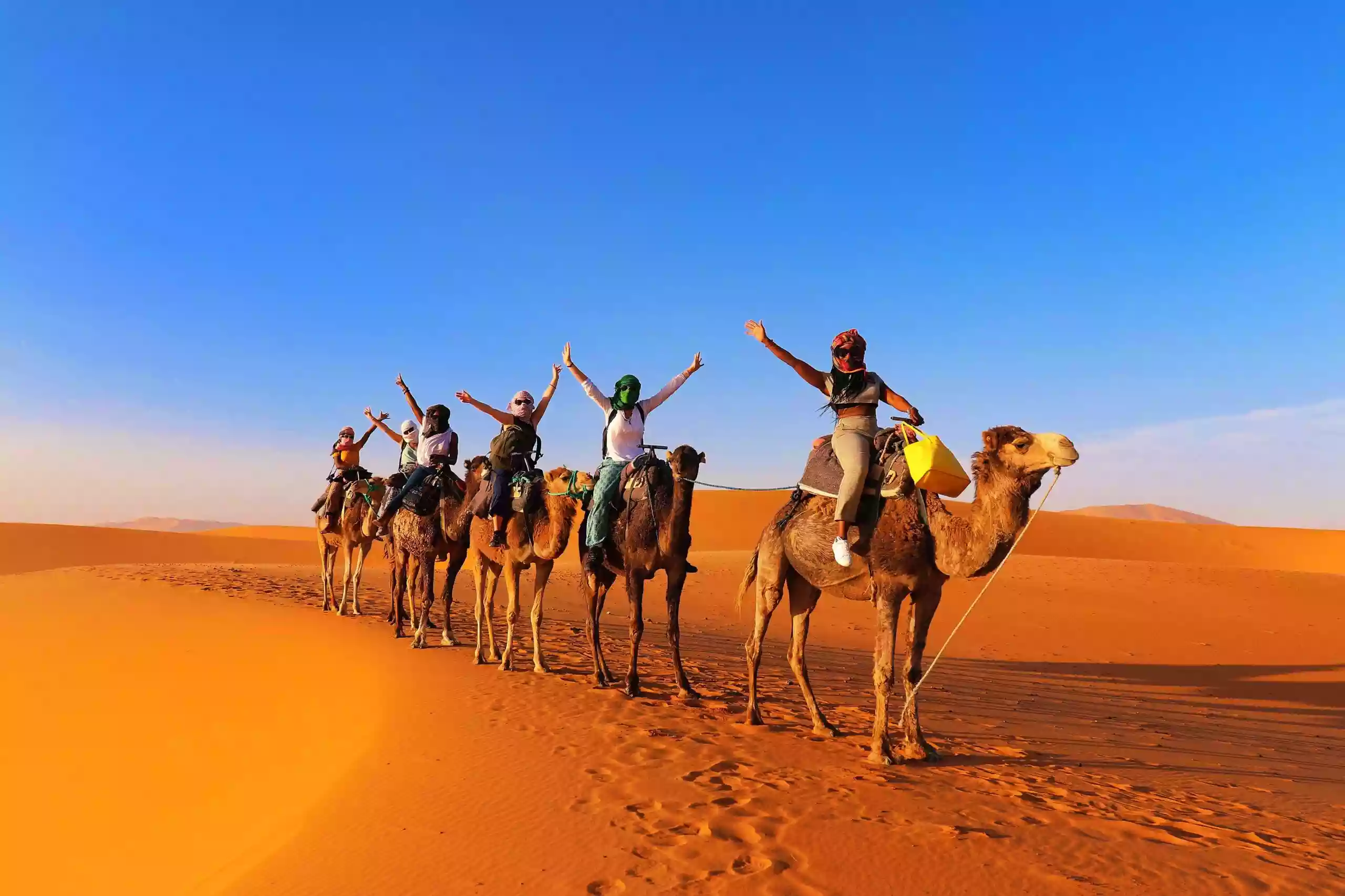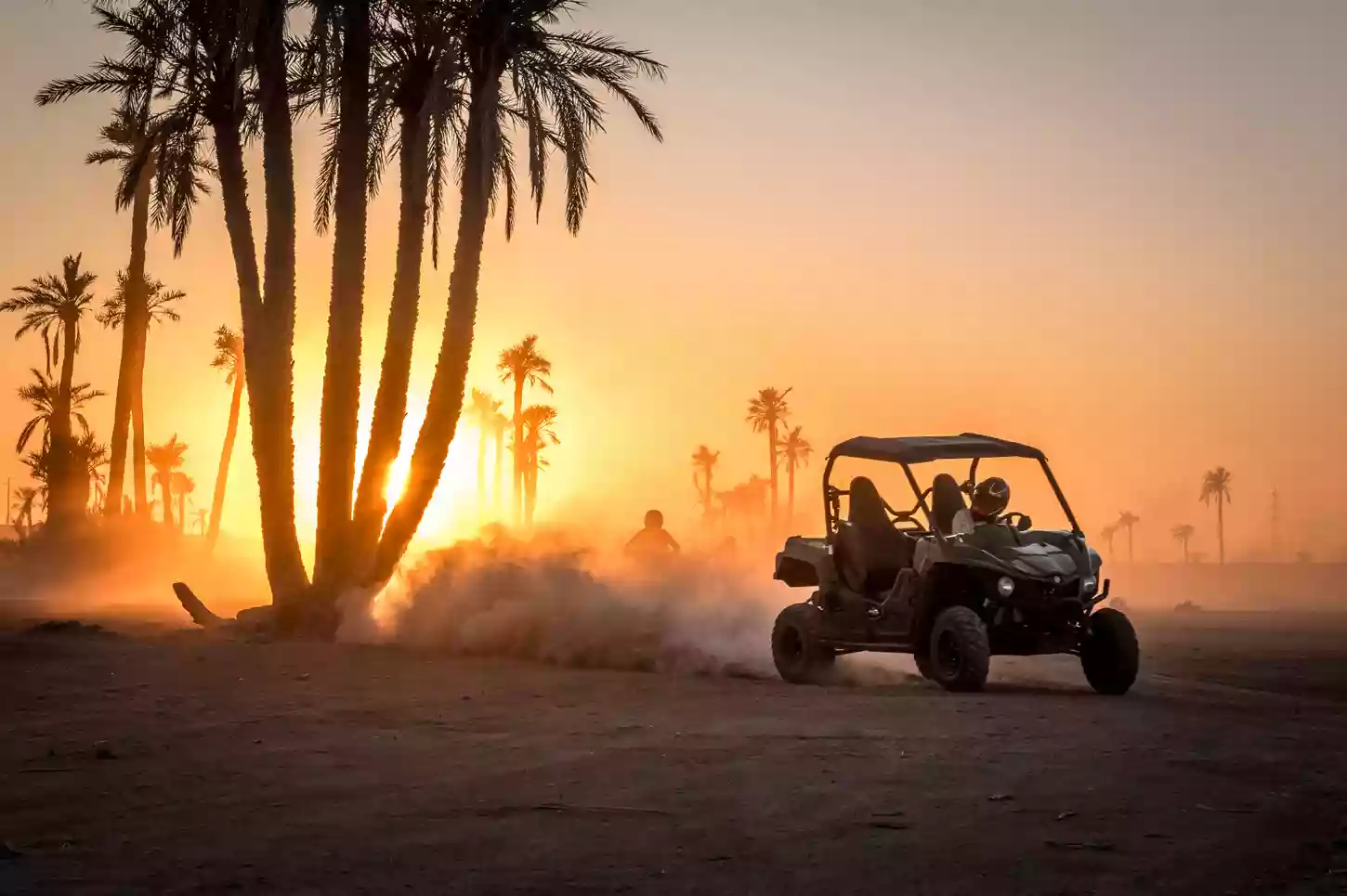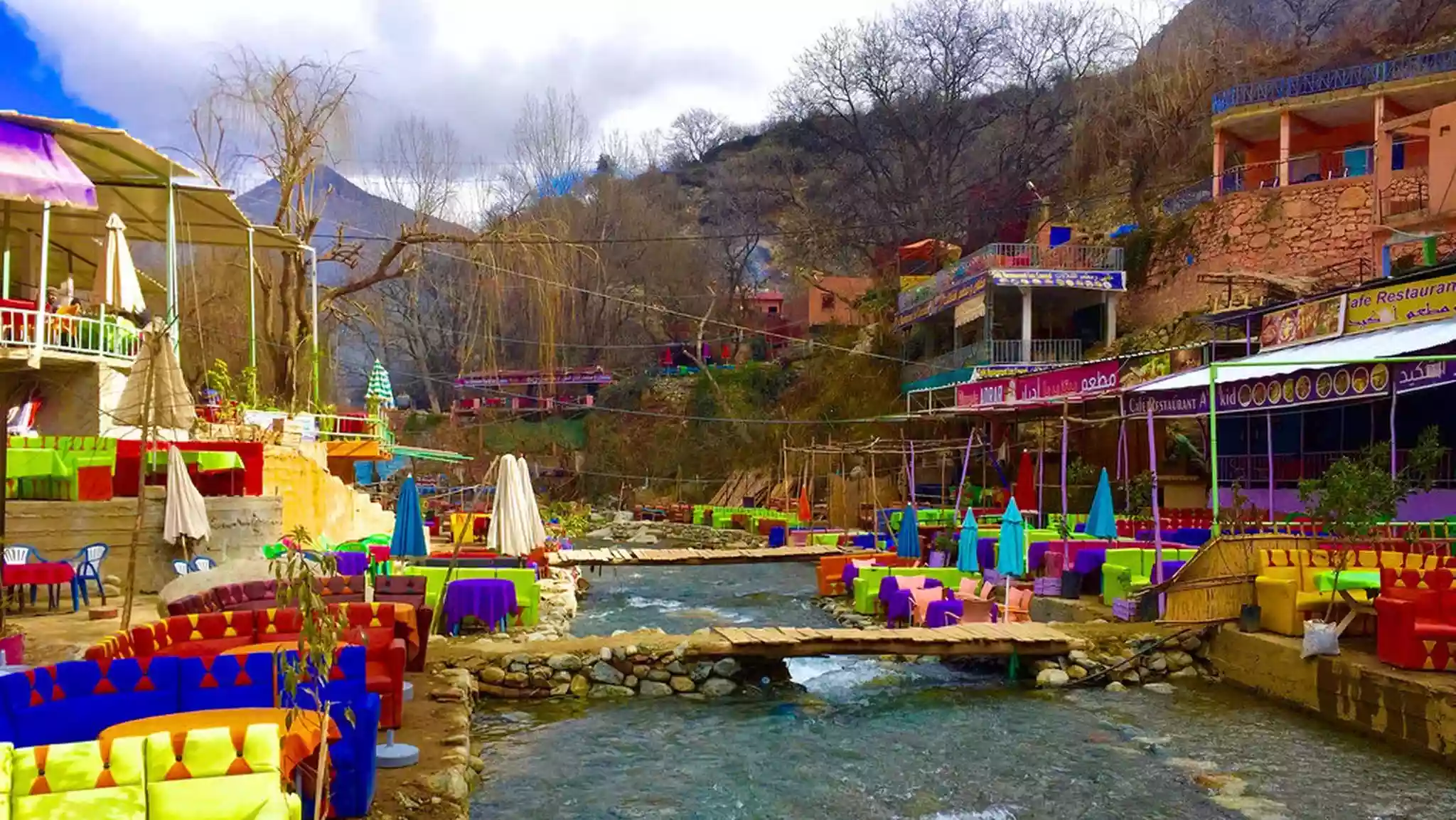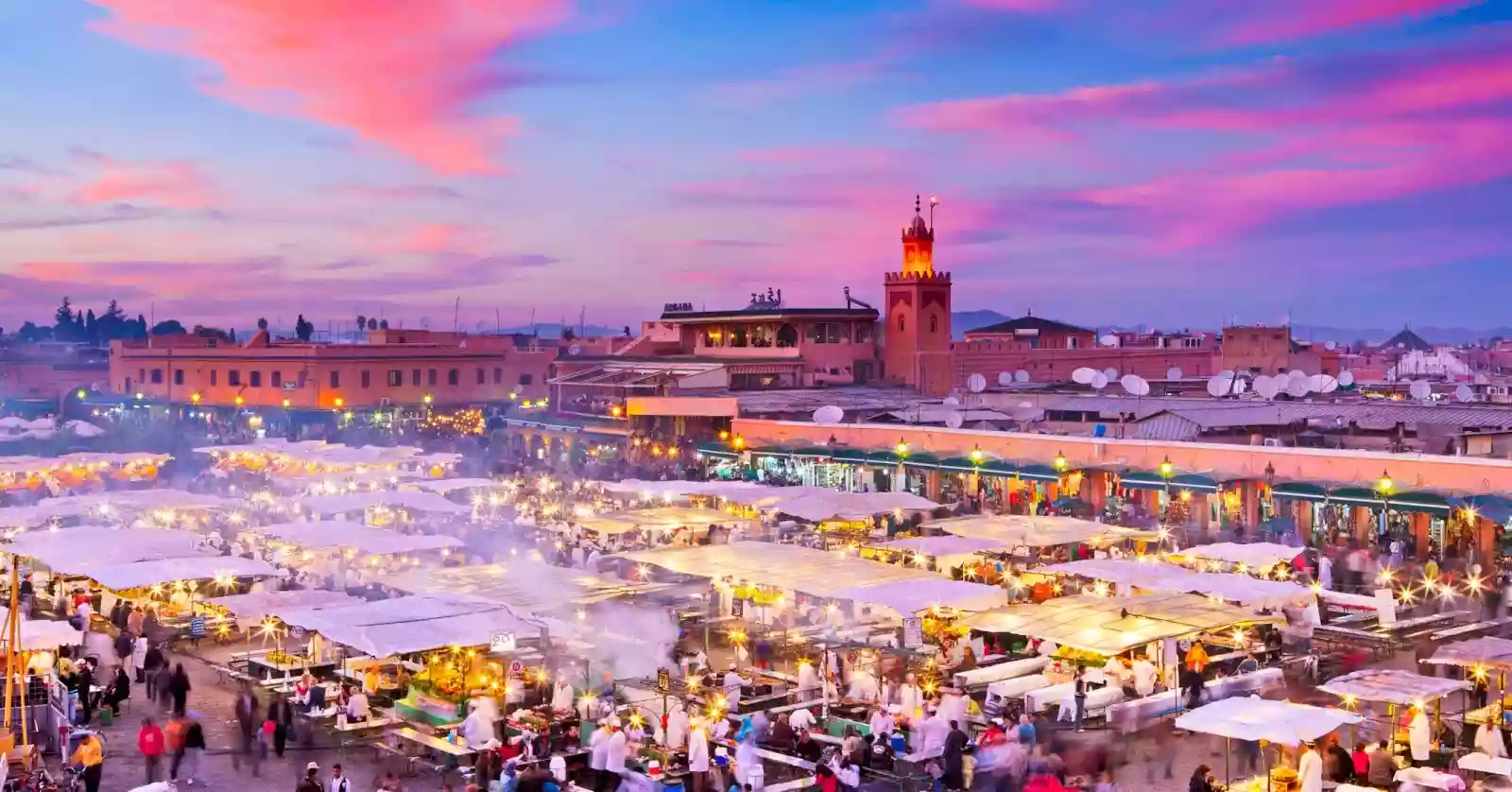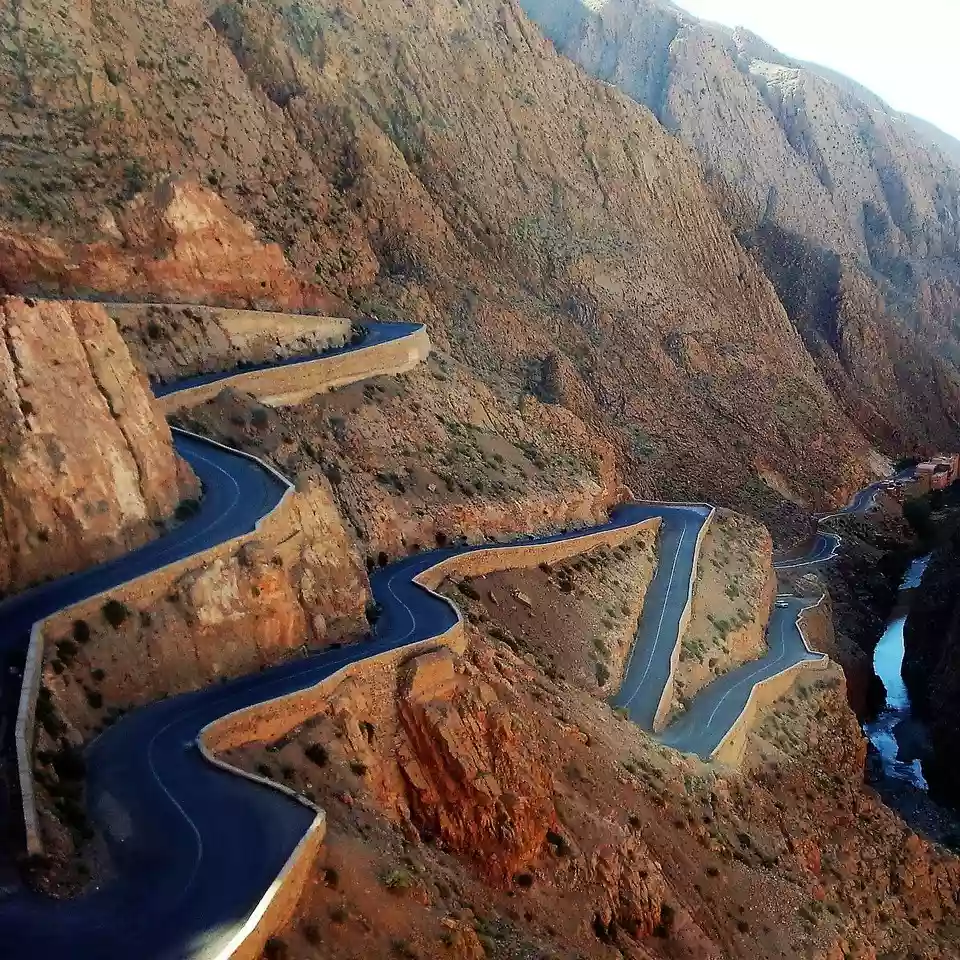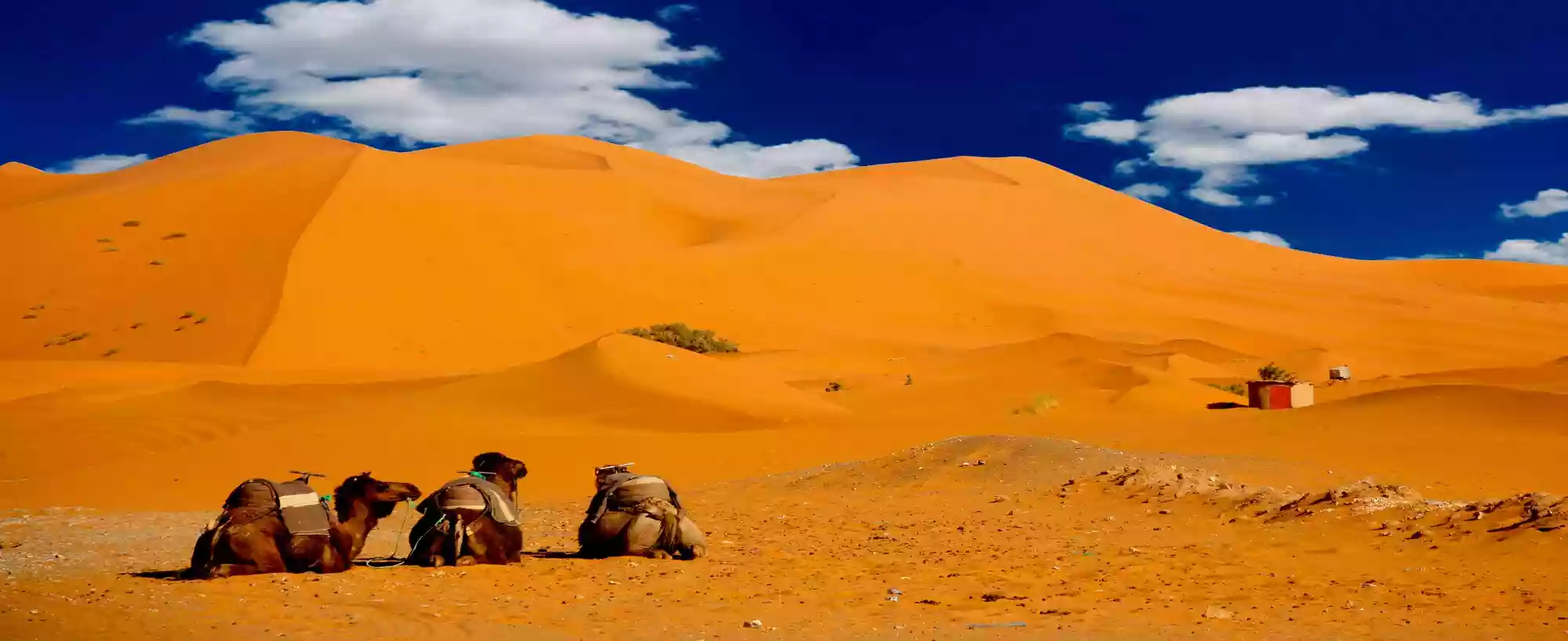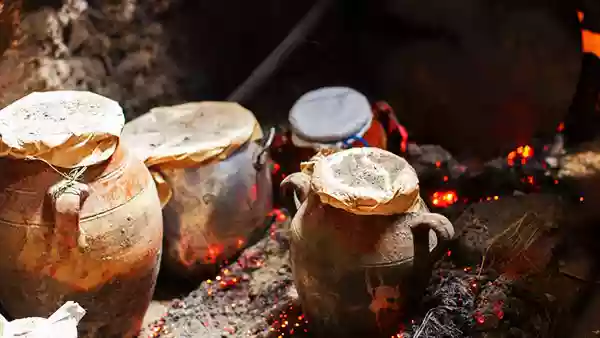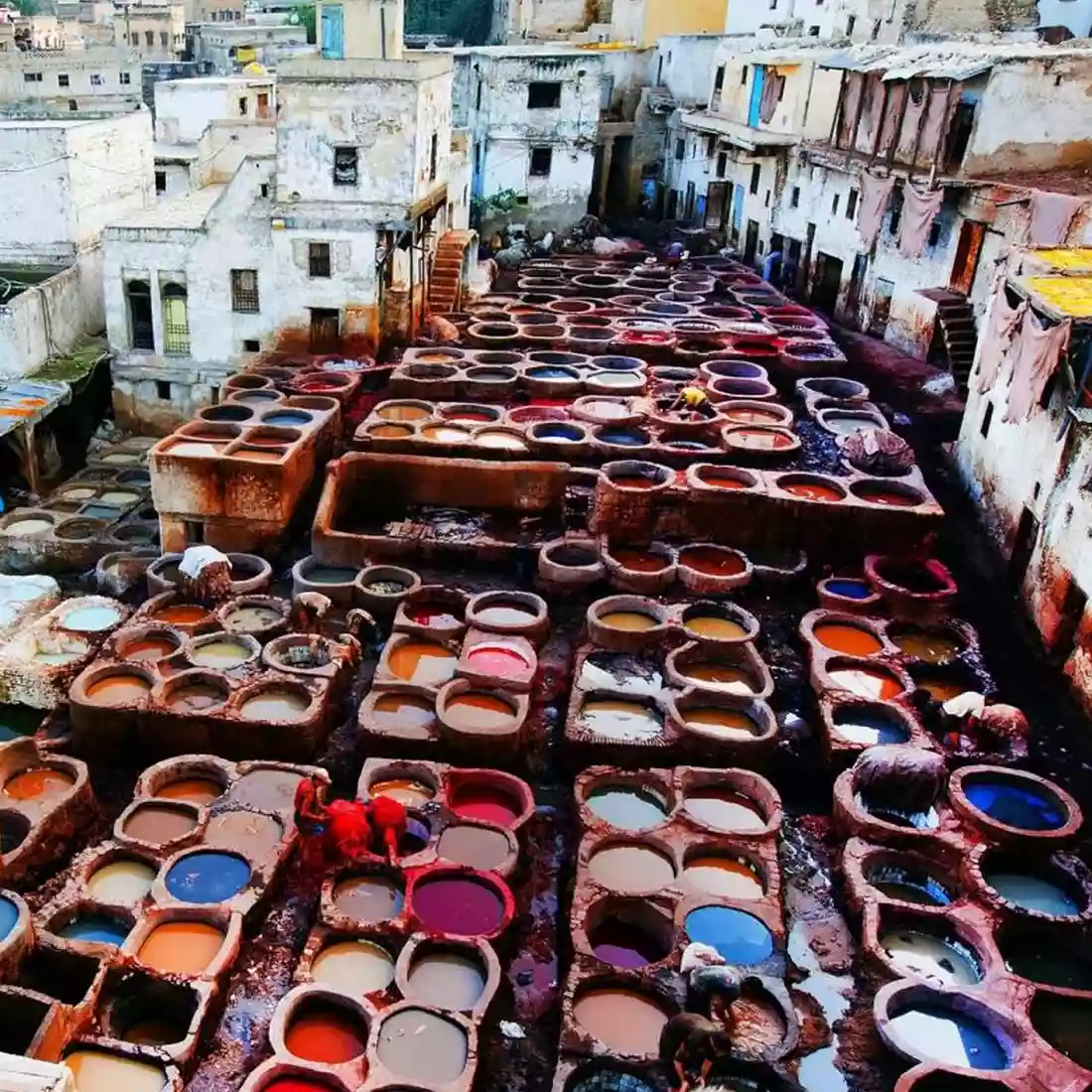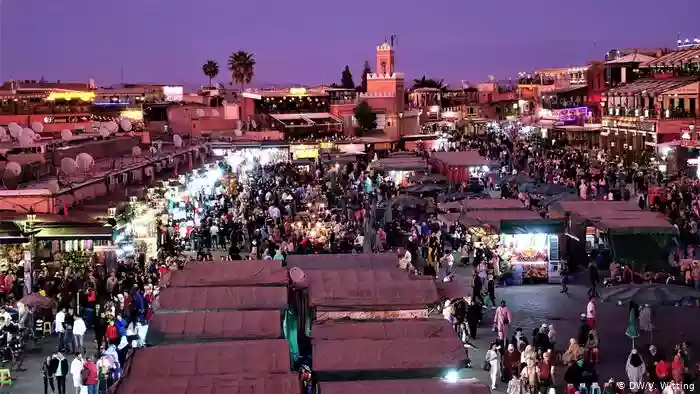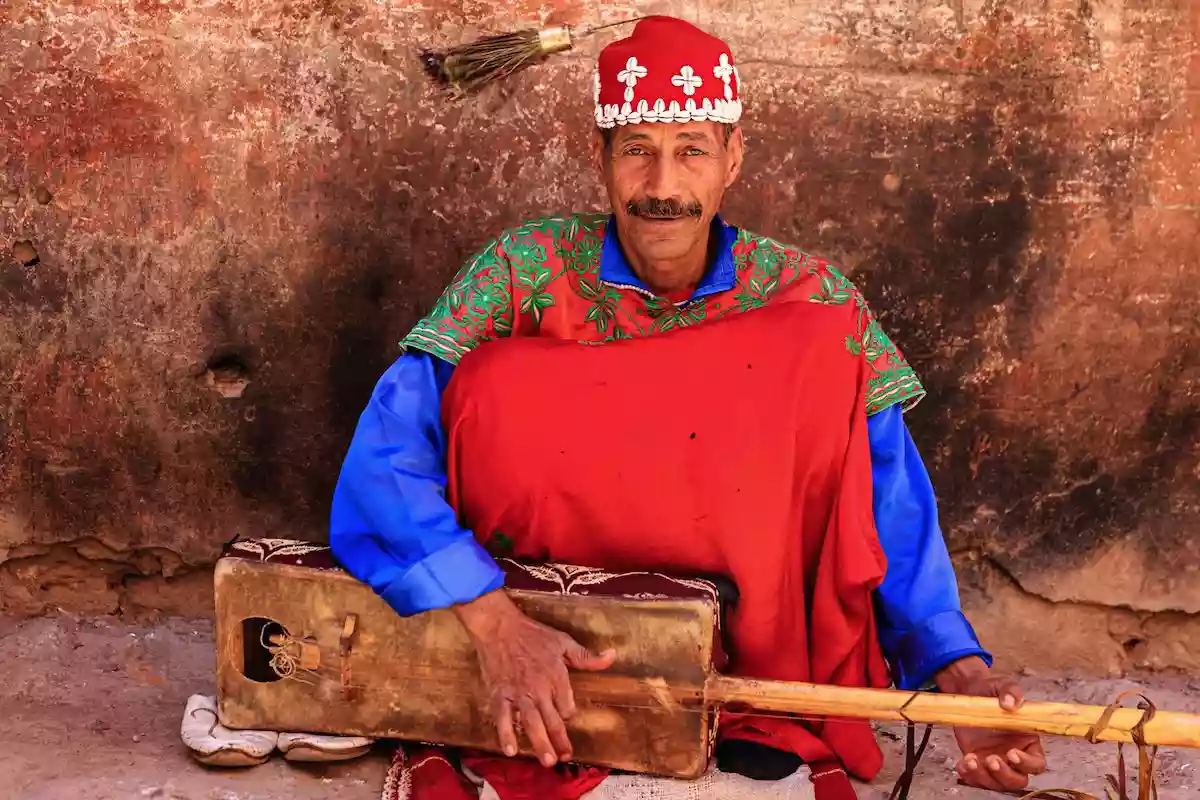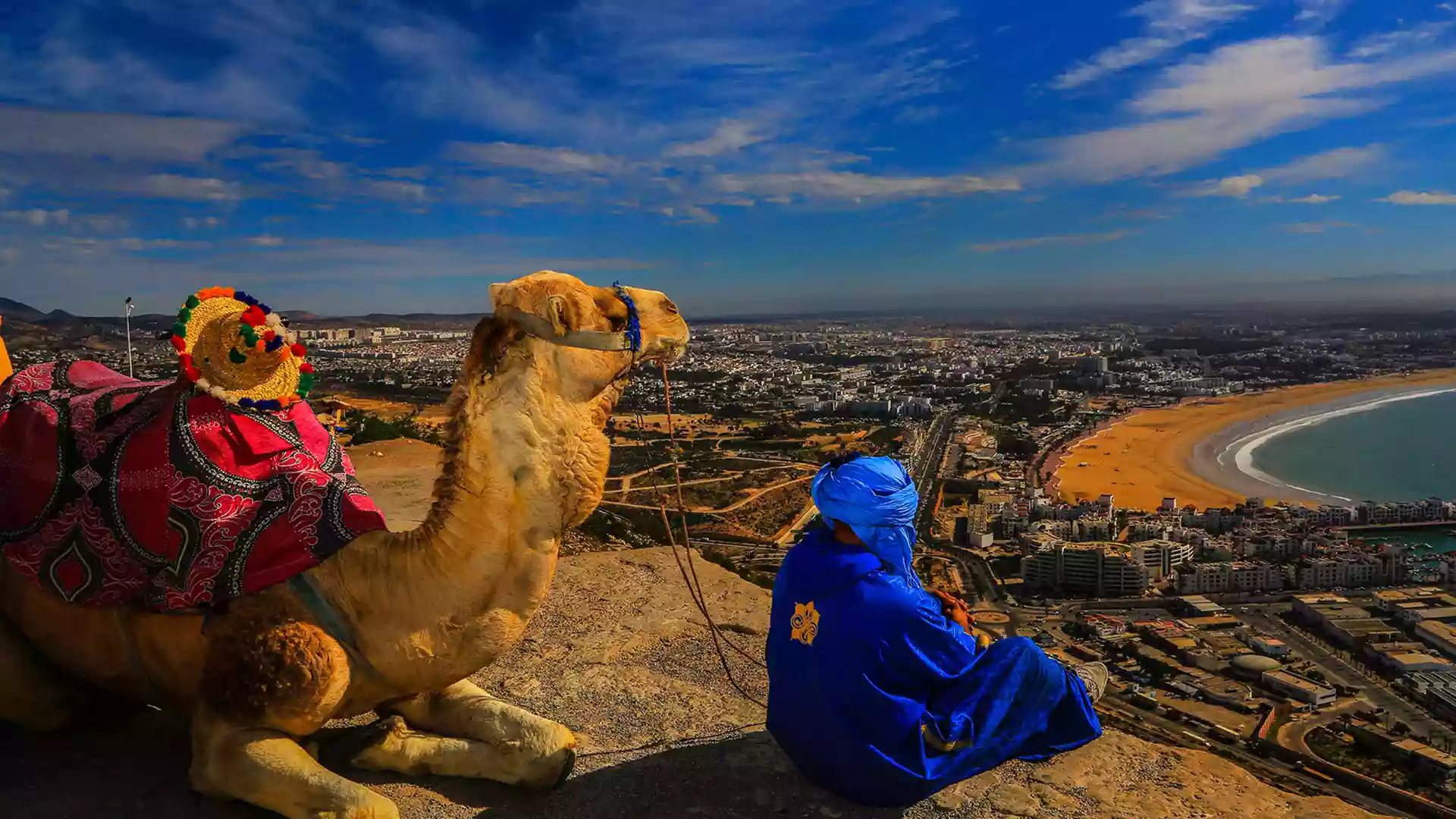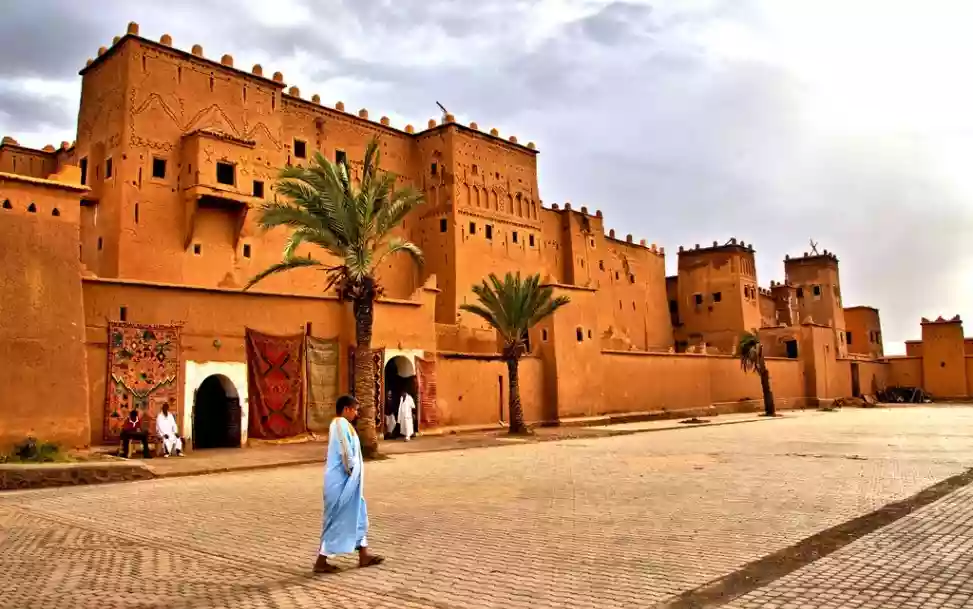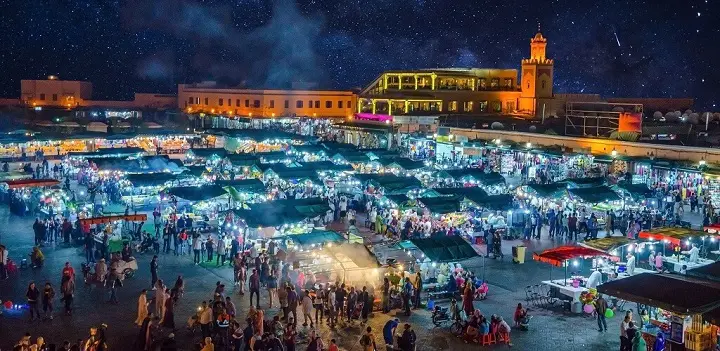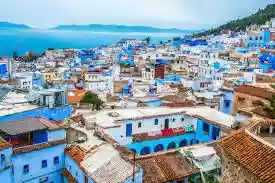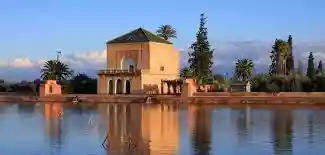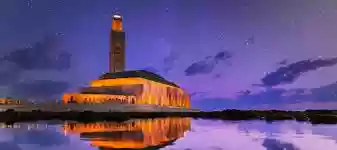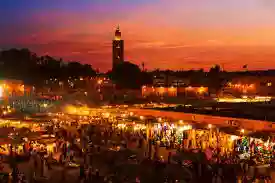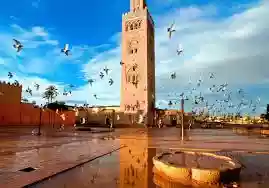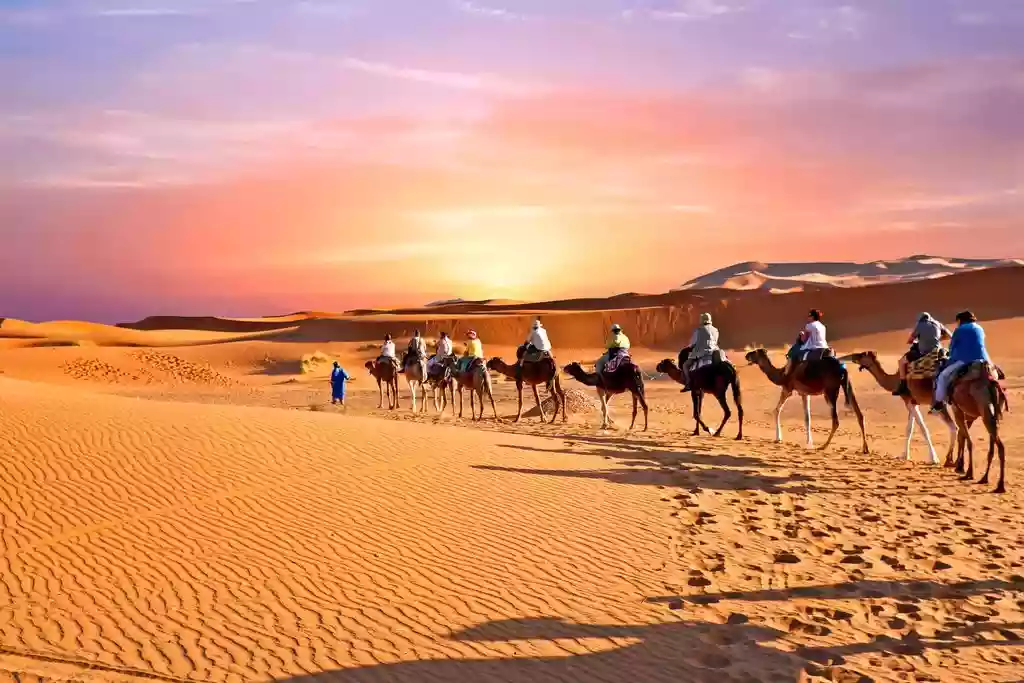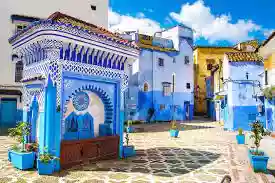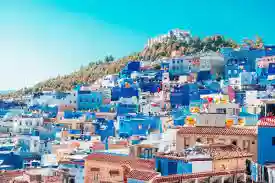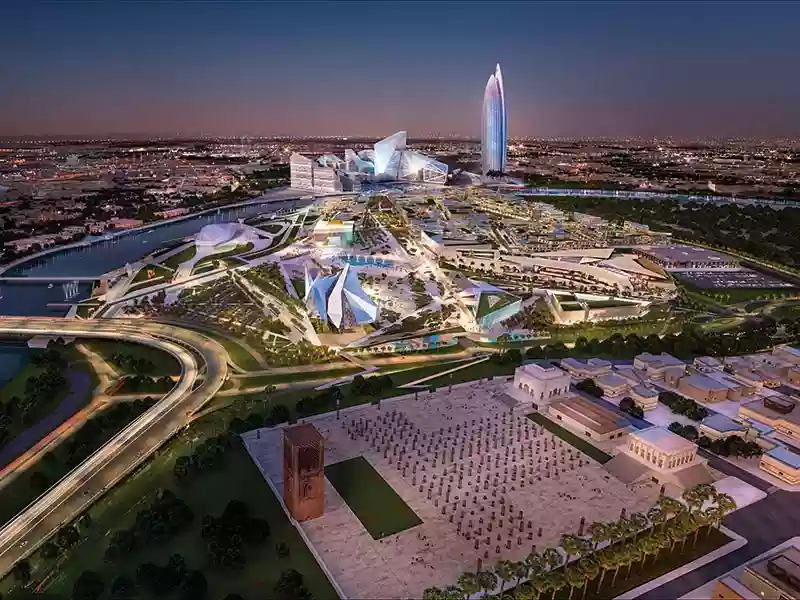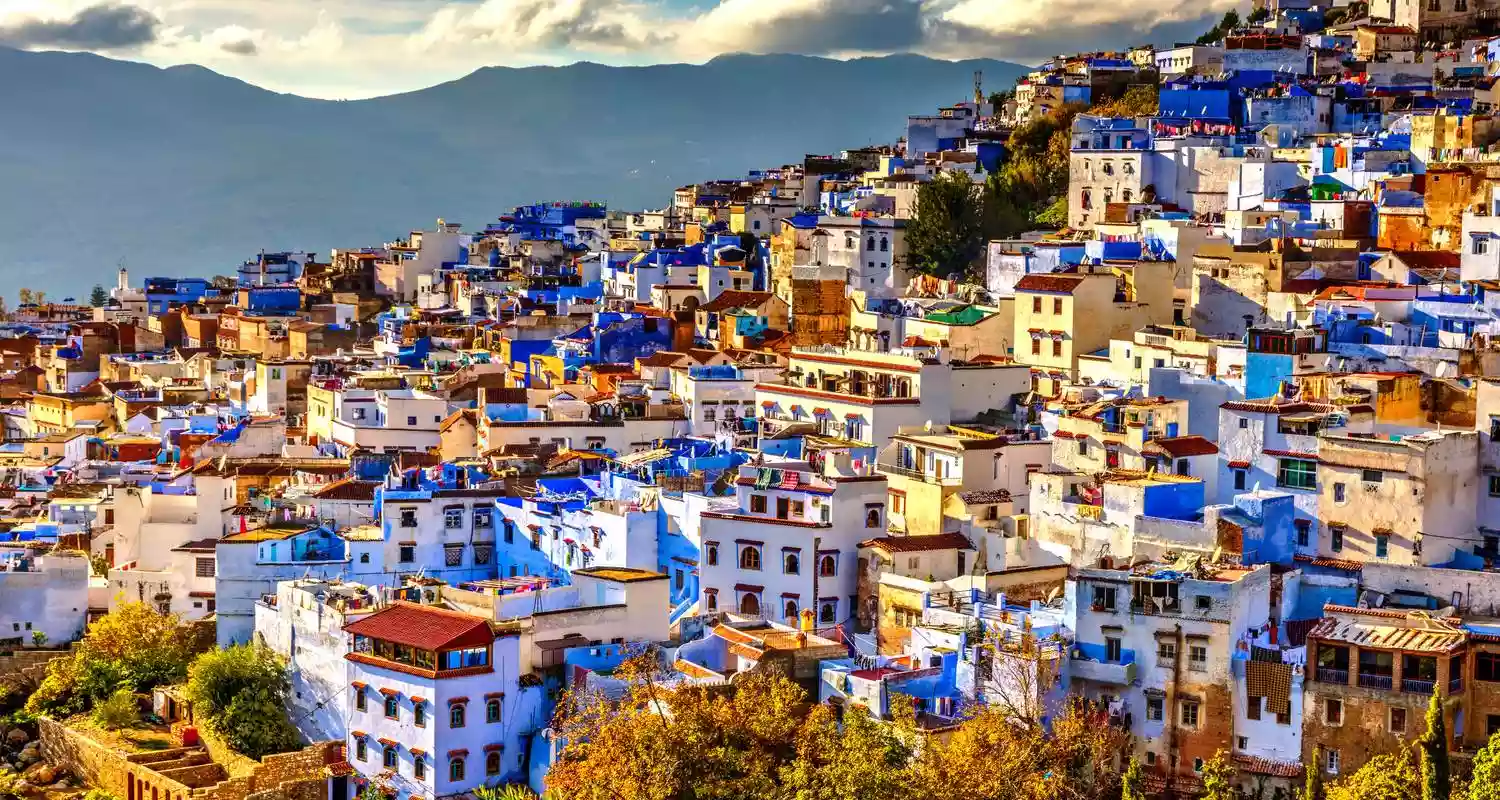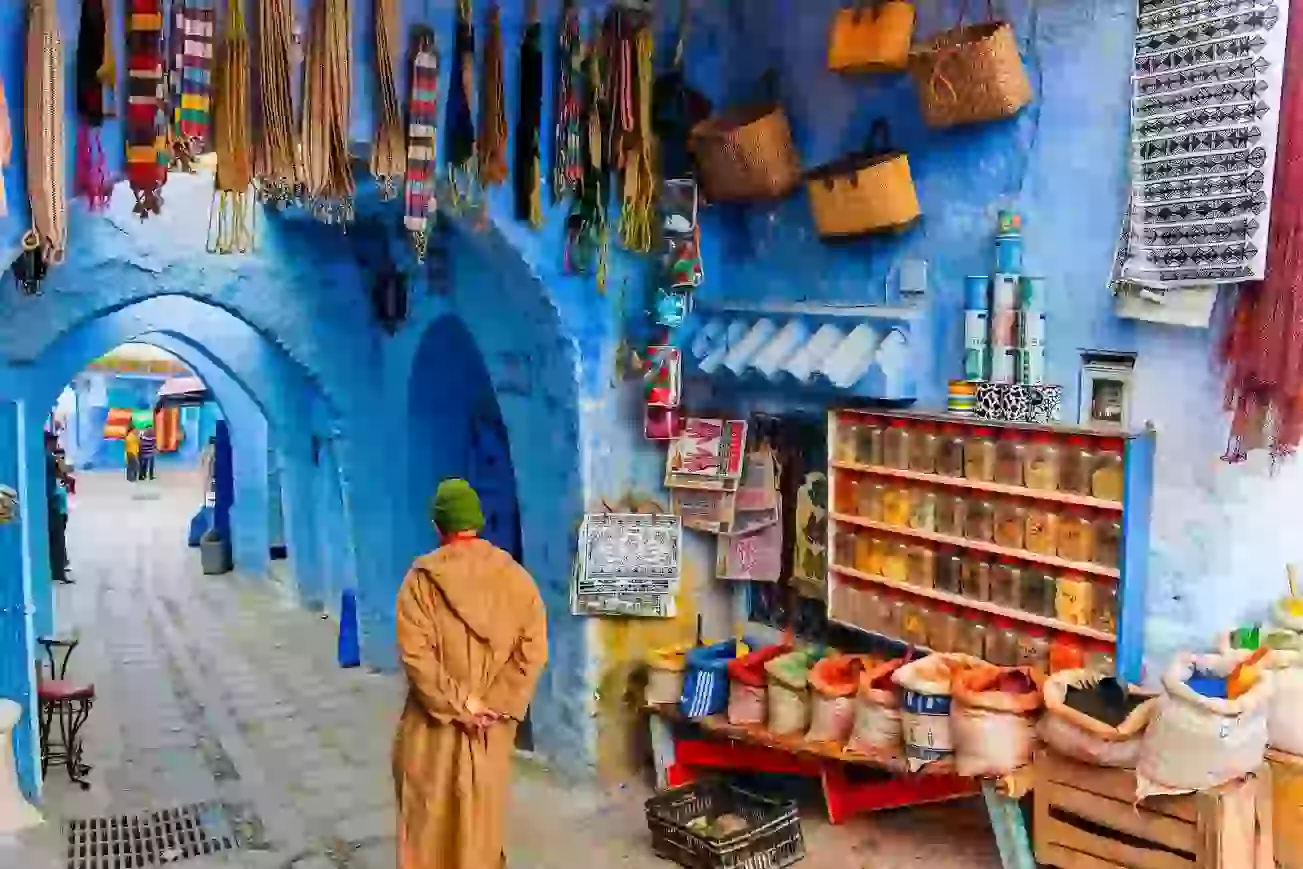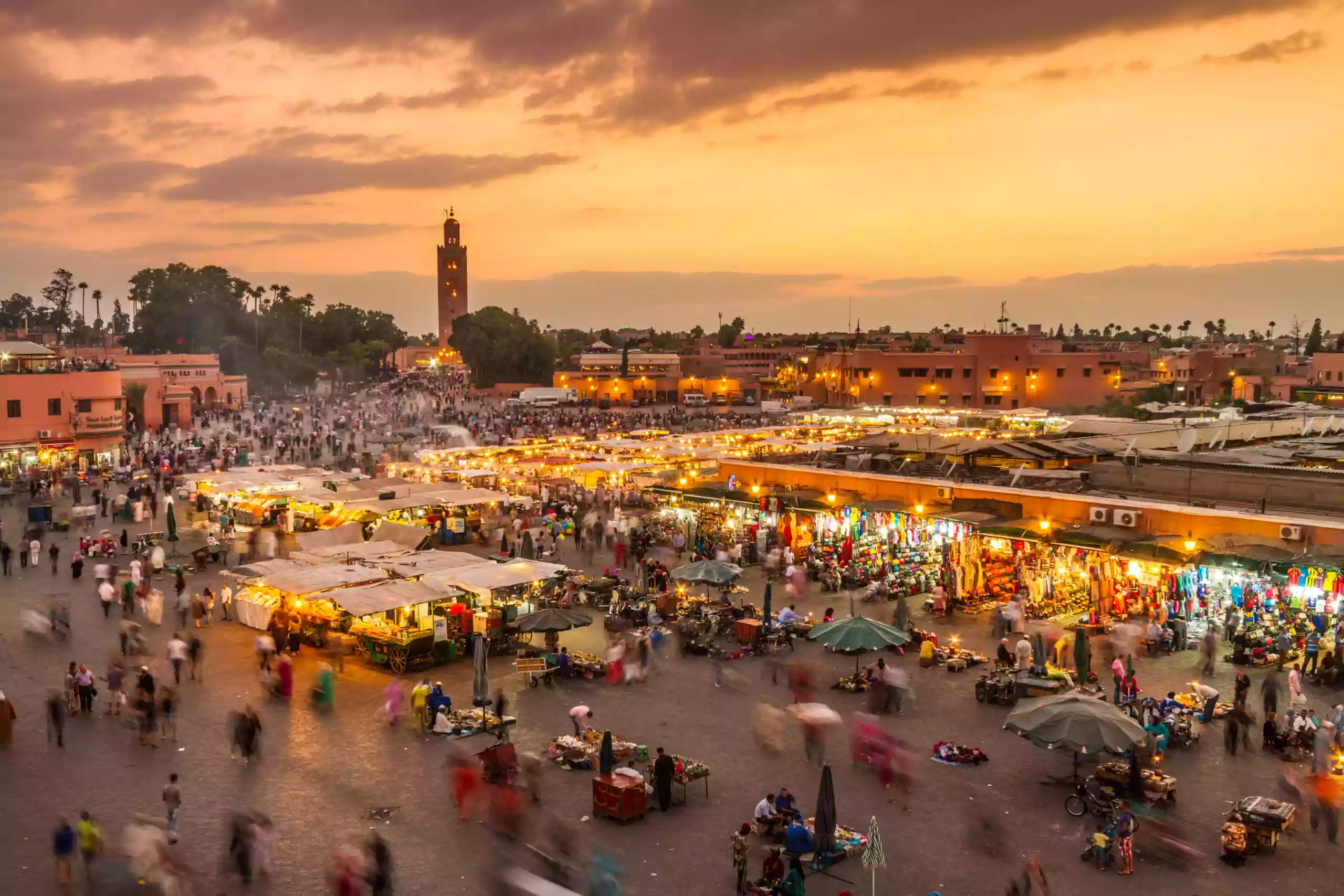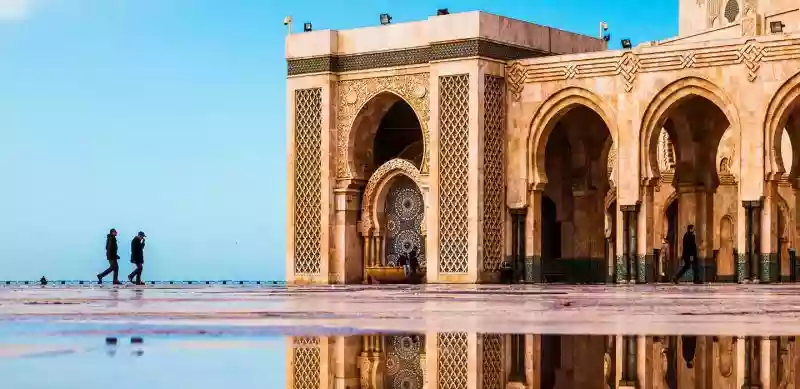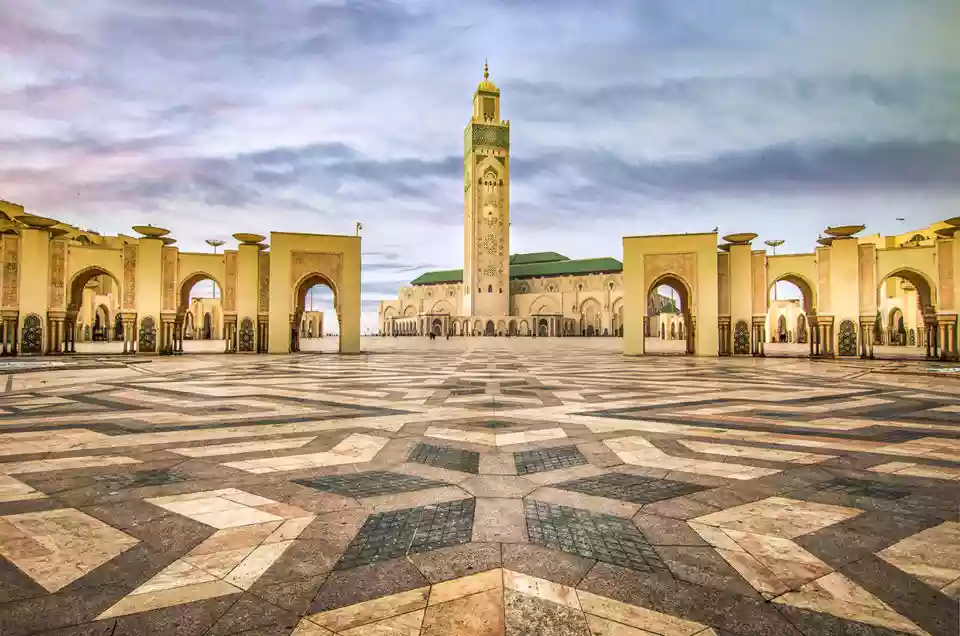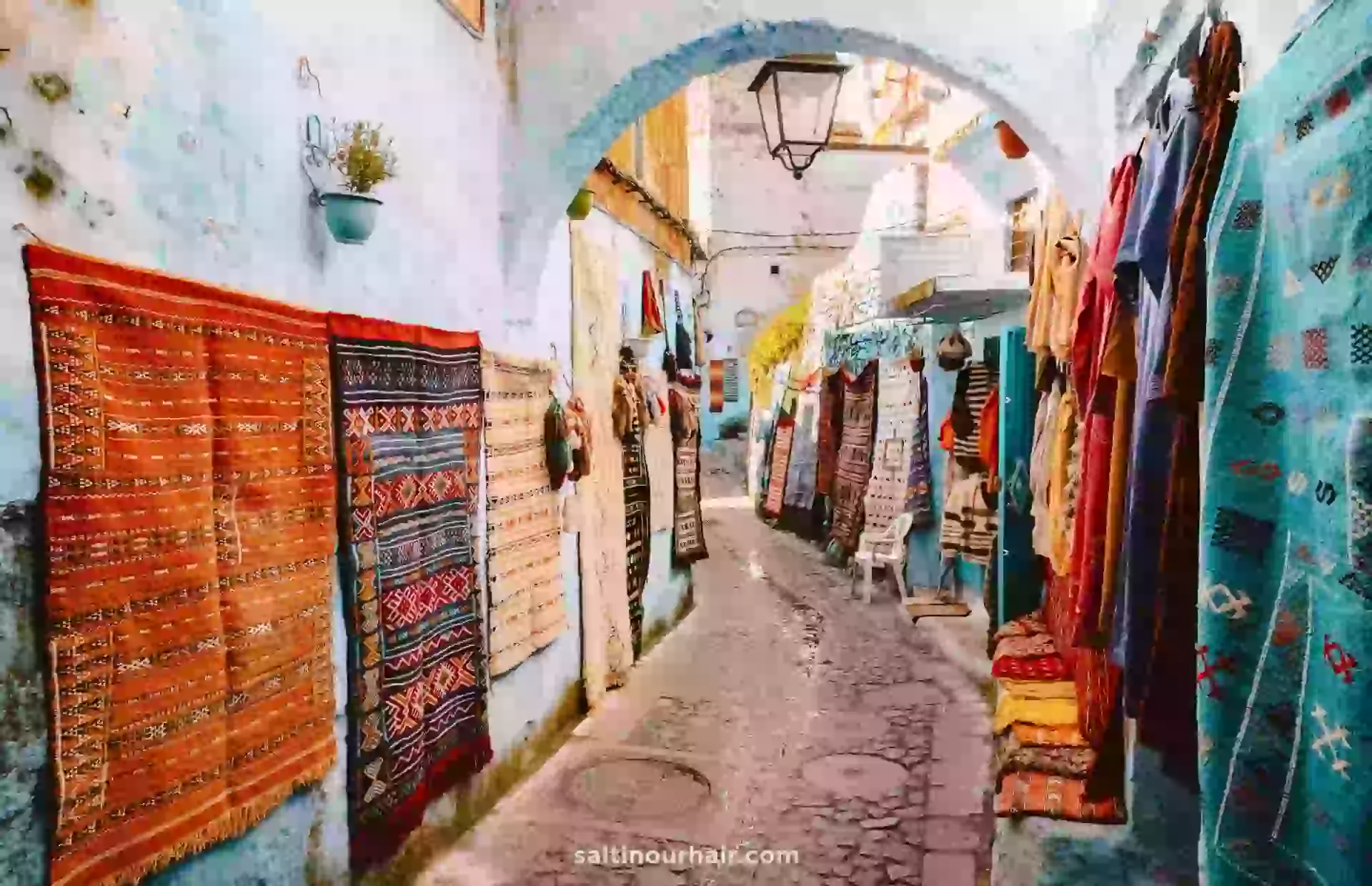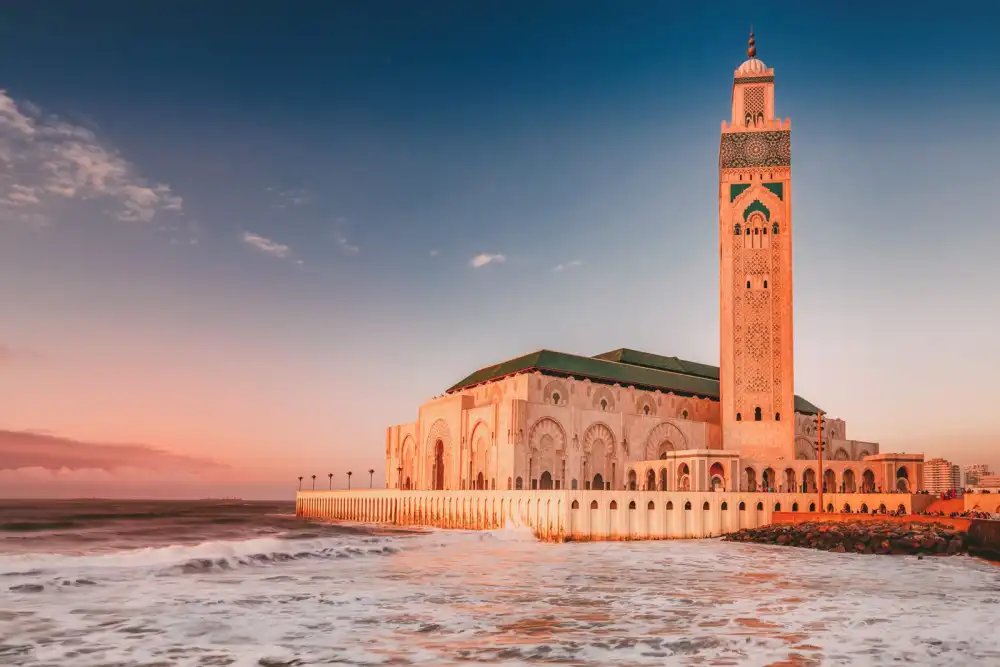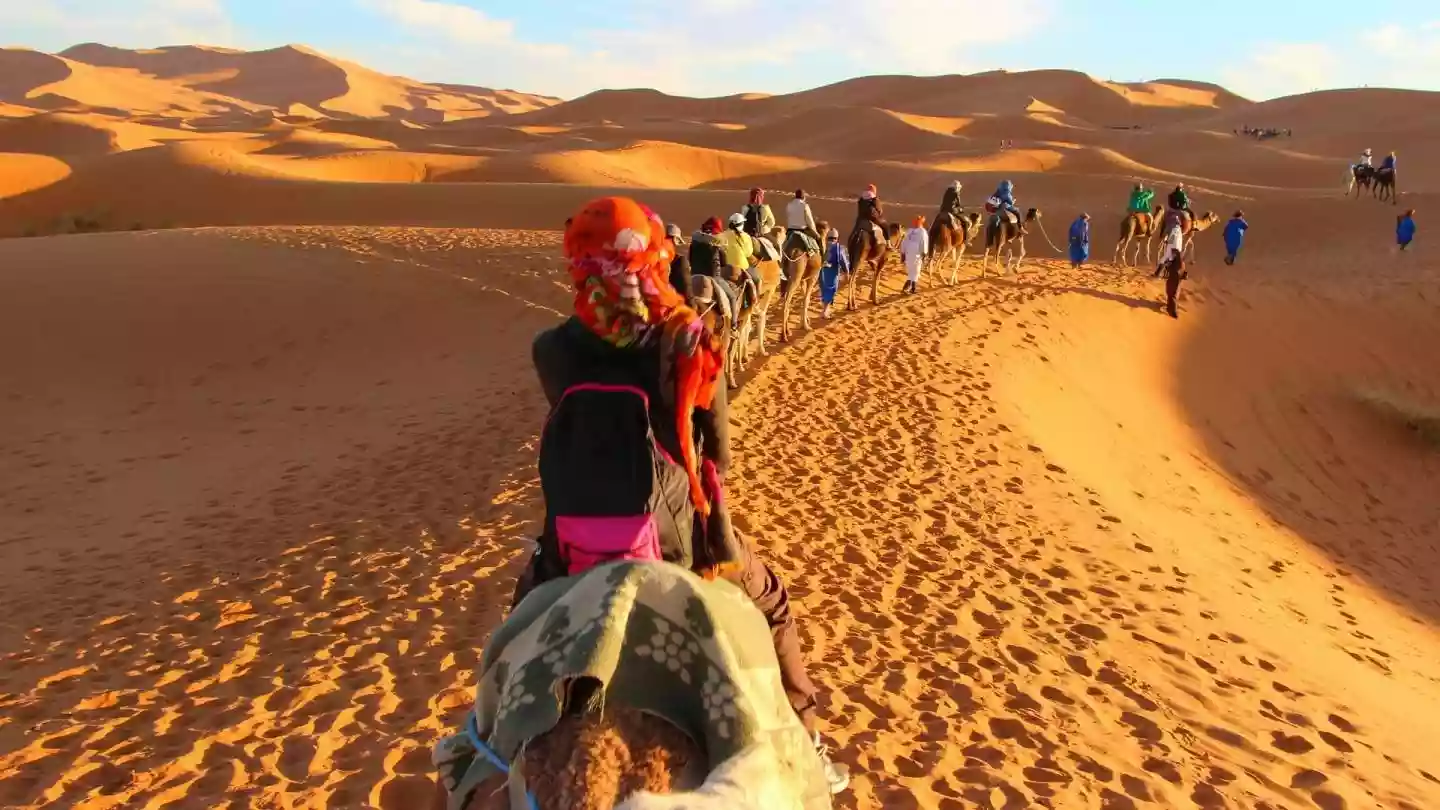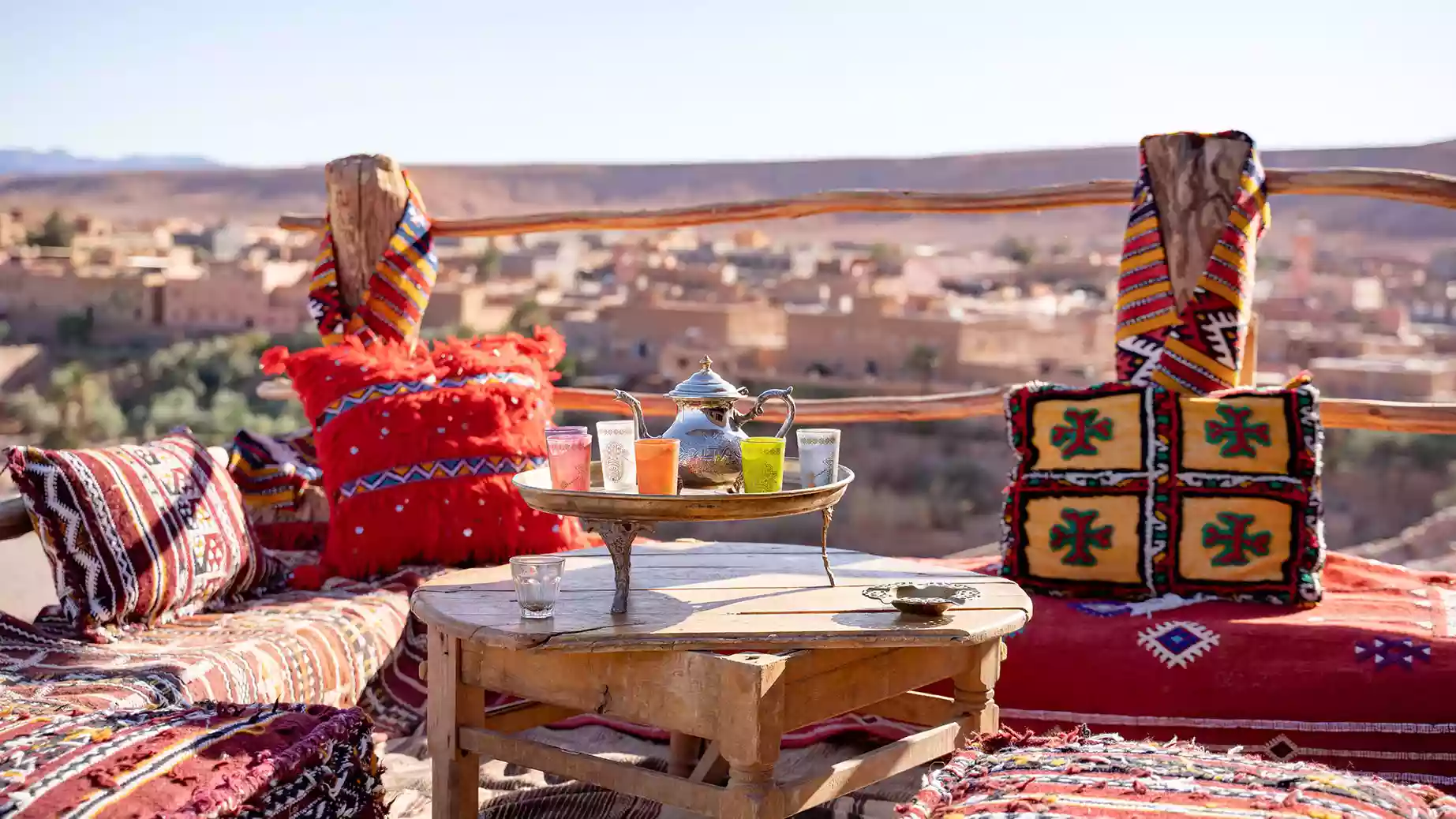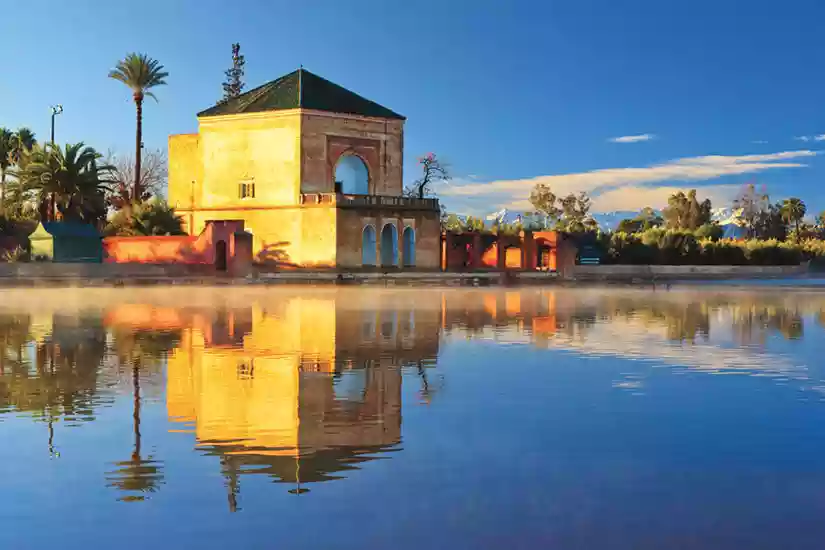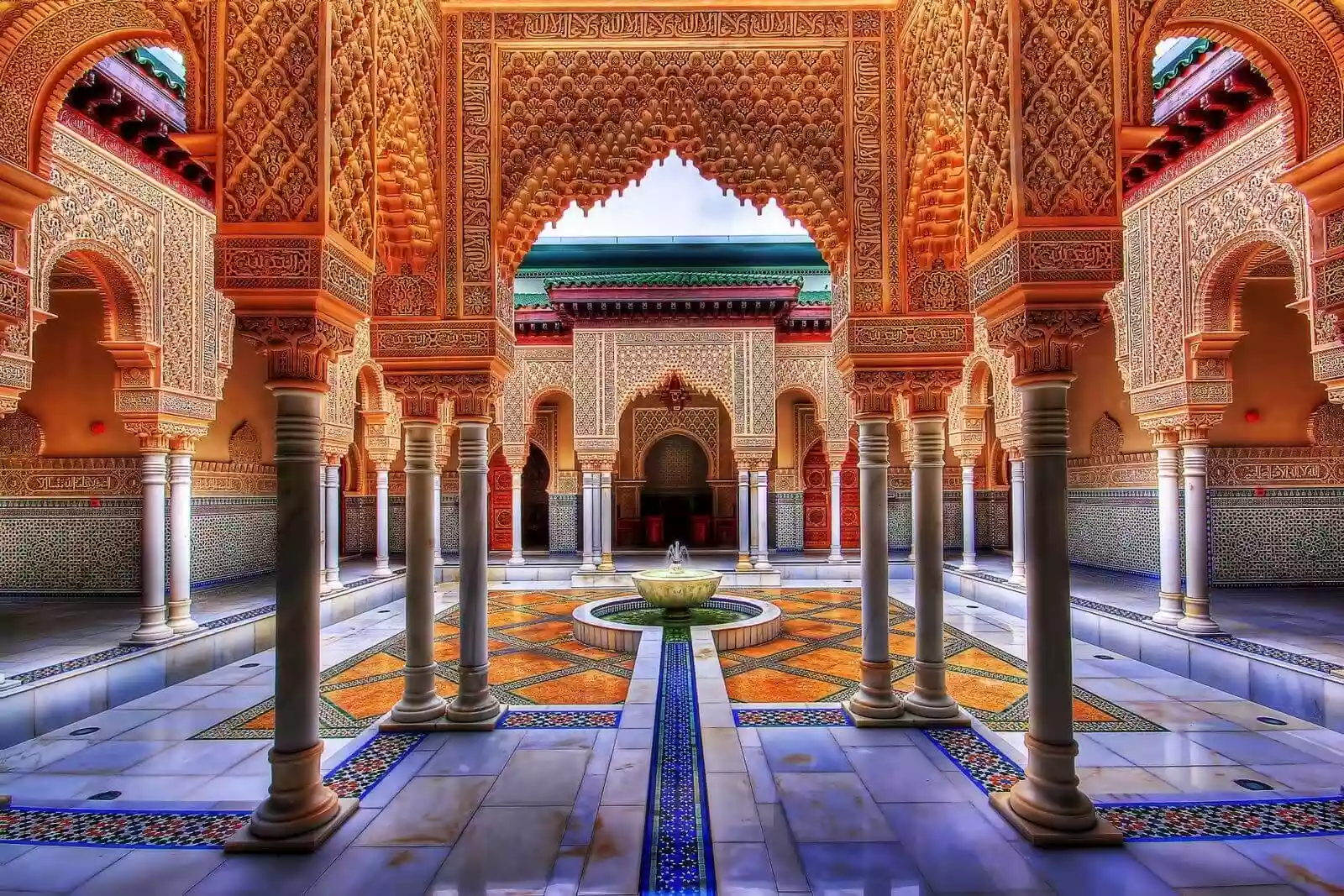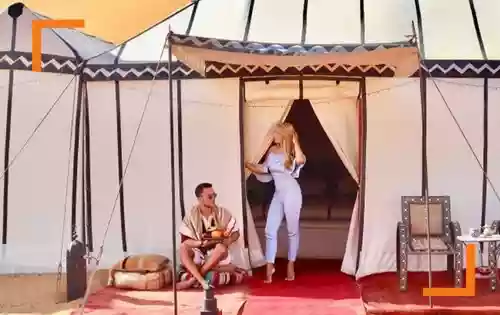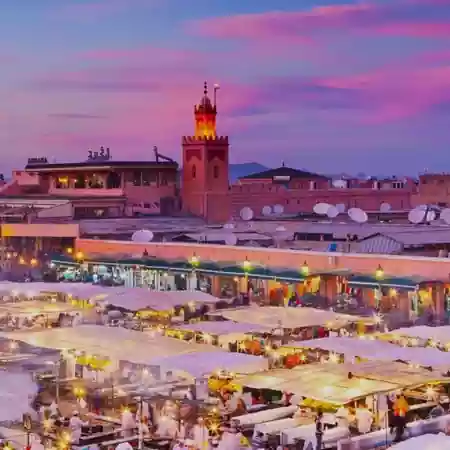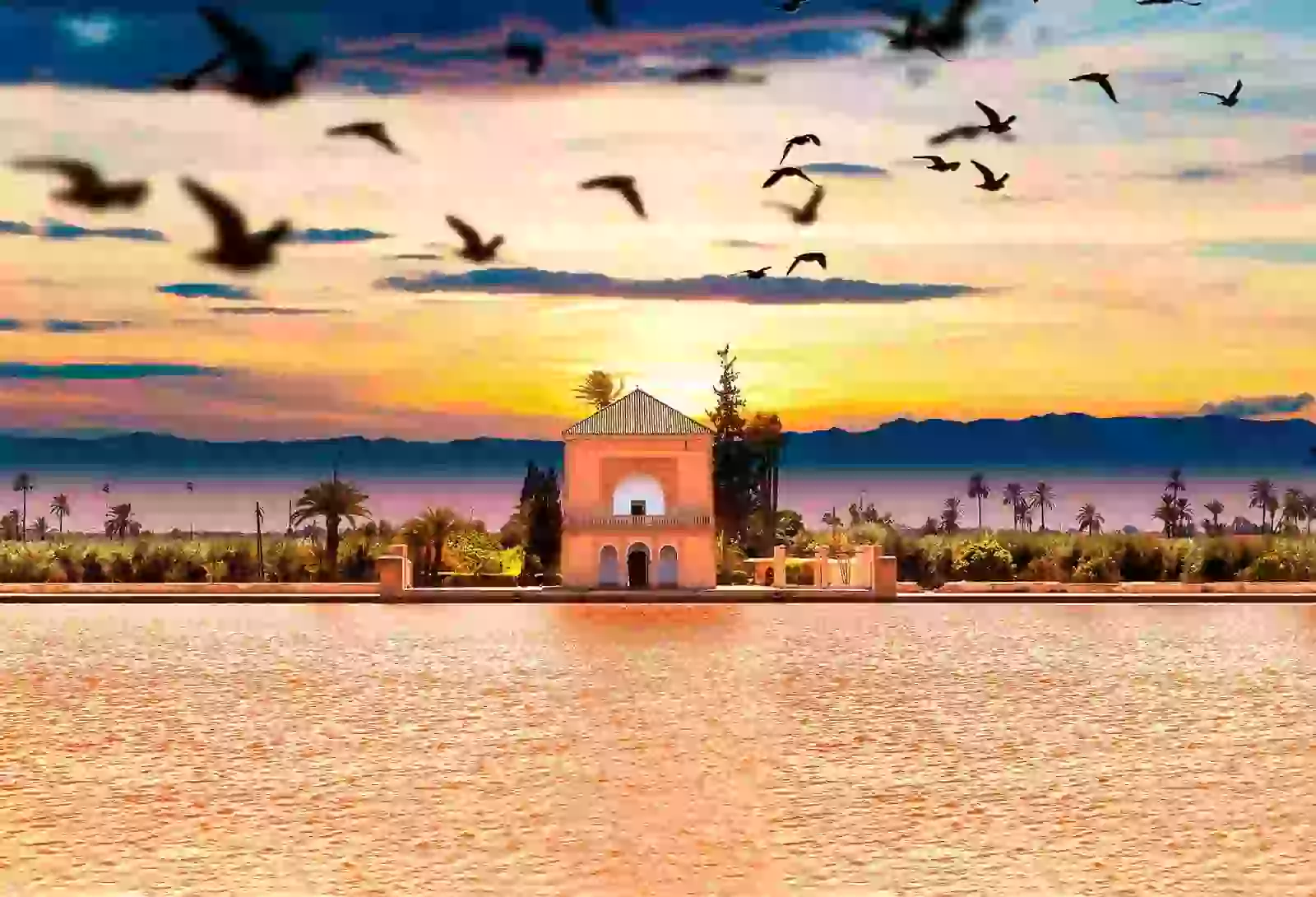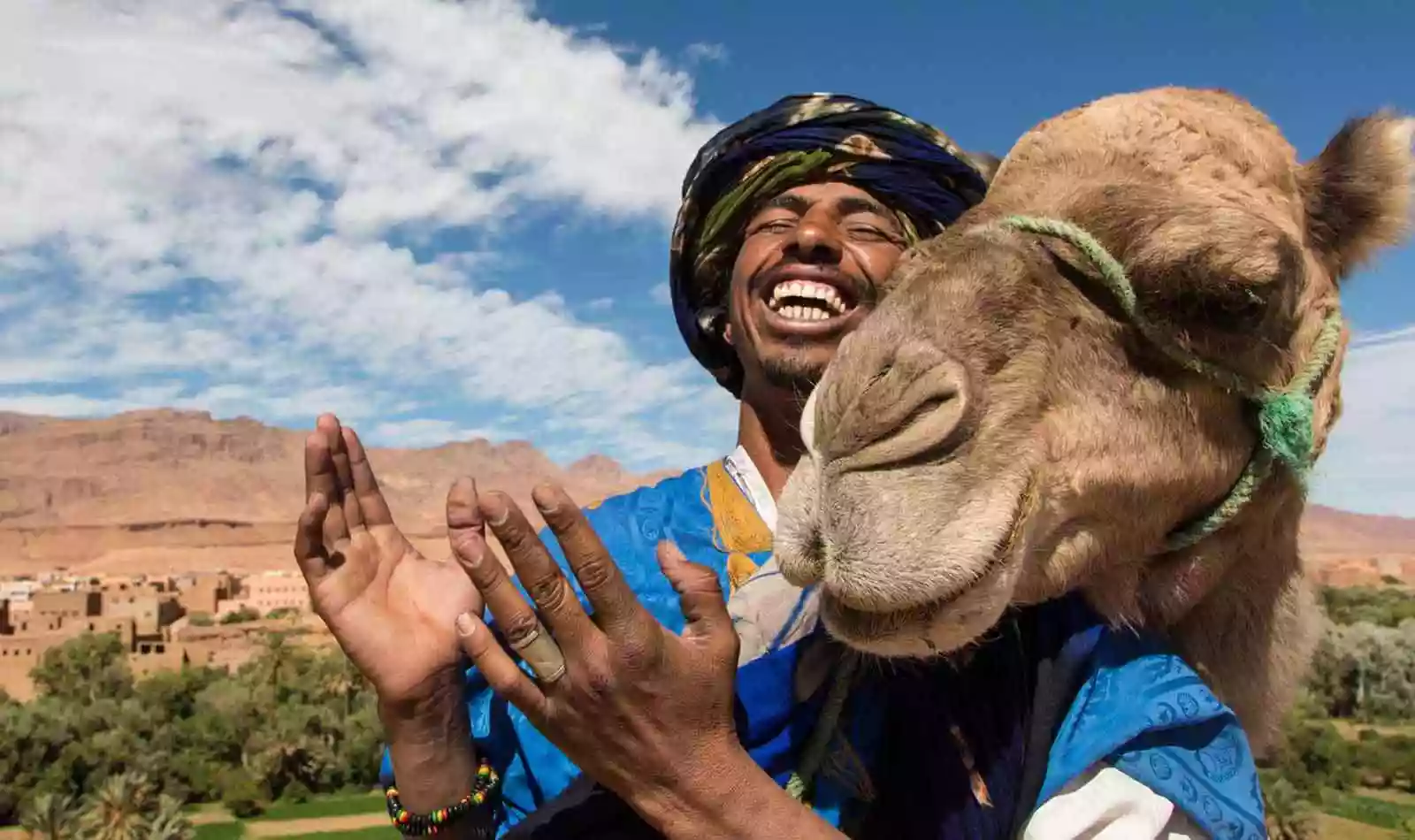Grand tour of Morocco
Morocco is a land of contrasts, between nature and culture and between the varied terrain of the sea, the desert and the mountains. Go to Marrakesh and revel in the “Red City”, the Koutoubia gardens and the renowned, festive Jemaa El Fna Square. From there, set your sights on Fez or Meknes, but don’t overlook the great sites along the way: Azilal, Beni Mellal, the Ouzoud waterfalls, Lake Bin El Ouidane and Ifrane, known as “Little Switzerland” because of its architecture and cedar forest. Enjoy the imperial cities by walking through the Fez medina and passing through Bab Mansour Gate in Meknes. Then tour the famous ruins at Volubilis just a few miles away.
Tour route : Casablanca – Rabat – Tangier – Chefchaouen – Fez – Erfoud – Ouarzazate – Marrakech – Essaouira – Casablanca
Highlights:
Morocco world Heritage sites to cover : Rabat – Voulibilis – Fez – Ait Ben Haddou – Marrakech – Essaouira. Sahara Tented Camps, High Atlas Mountains
Day 1 : Airport – Casablanca
Upon arrival in Casablanca, the economic capital of Morocco, you will be meet by our driver guide. Depending on arrival time, you will visit the city, of Casablanca “the white city” begins with an orientation tour through its broad avenues, stroll through the narrow streets of the medina, the United Nations Square, the Place Mohammed V, the central market district Endowments, the residential district of Anfa, Boulevard of the Corniche along pools and restaurants and the Hassan II Mosque. As it is the second largest mosque in the world and indeed a beautiful work of art, it is one of the rare mosques opened to non-Muslims. Diner and over night in your hotel
Day 2 : Casablanca – to Rabat
After breakfast this morning overland to Rabat, one of Morocco’s ancient imperial cities and its capital since 1913. We’ll arrive at our hotel in the early afternoon, followed by some time at leisure.This evening we meet our fellow travelers who took the optional pre-trip extension to Tangier, Chefchaouen & the Berbers of the Rif during an orientation briefing. Tonight, we’ll enjoy dinner on a boat that is docked on the Bou Regreg river, which separates Rabat from the city of Salé.
Day 3 : Raba- Guided walking tour
After breakfast this morning, we have a brief introduction to the Arabic language before heading out on a guided tour of Rabat. We see the exterior of Rabat’s Royal Palace and its impressive Bab ar-Rouah (Gate of the Winds), and visit the ruins and wild gardens of the Chellah, a 14th-century Merinid necropolis. We walk in the Andalusian Gardens, within the walls of the kasbah (fortress) of the Oudaya. We stop at the Hassan Tower, a huge unfinished mosque, built mostly at the end of the twelfth century.Enjoy lunch on your own in Rabat, and then the afternoon will be yours to make your own discoveries. Tonight, we gather for a Welcome Dinner at a local restaurant.
Day 4 : Rabat – to Fez
This morning, we leave the coast and Rabat behind, and set off for Fez. We’ll drive past sweeping fields, rolling countryside, and the tree-covered slopes of Mount Zerhoun, which mark the beginning of the Rif Mountains. Depending on the time of year, the fields and slopes may be speckled with poppies, prickly pear, olive trees, or snow.Upon our arrival in Fez, we’ll check into our riad—a Moroccan home that has been refurbished into an intimate hotel—and have lunch there. Then we’ll take a short drive up a hillside to take in a panoramic view of Fez’s tightly clustered Old City, the medina, which we’ll explore in depth tomorrow. Afterward, we’ll learn how Moroccan pottery is made at a local ceramics workshop.
Day 5 : Fez – Guided walking tour
Following breakfast in our riad, we’ll begin our full-day exploration of Fez. Led by our Trip Leader and a local city guide, we leave our bus, the 21st century, and all previous conceptions of urban design behind as we enter Fez’s medina, often considered the world’s most well-preserved medieval city, and a UNESCO World Heritage Site. We start by exploring the traditional Jewish quarter, called the mellah, where we’ll view the elegant gates of the Royal Palace.Then we’ll enter the souks (markets) of Fez, walking through myriad tiny lanes. This ancient section of Fez is a maze of narrow streets, and one of the largest car-free urban areas in the world. Every inch of space is filled with bazaars, cafés, shops, donkeys, and people. You can’t help but be amazed by the vibrant display of age-old urban tradition, and the intensity of life bursting around every corner. The thrill of it must be experienced to be understood.We have lunch in a local restaurant and then explore the medina some more before returning to our riad.Early this evening, we have a bit of free time to continue exploring Fez. Then we’ll join a local family for a Home-Hosted Dinner, where we’ll get the chance to taste authentic regional cuisine, and learn even more about daily life in this ancient city.
Day 6 : Fez – Day trip to Volubilis and Meknes
After breakfast in our riad, the day is yours to make your own discoveries in Fez.Or, you may join a full-day optional tour of two UNESCO World Heritage Sites, Volubilis and Meknes. First we’ll explore Volubilis, one of the most well-preserved Roman cities in North Africa. Led by a local guide, we’ll wander amongst its historic ruins and striking mosaics, and our guide will help us envision what life was like in ancient times. From this vantage point, we’ll be able to gaze upon the panoramic, whitewashed vistas of the holy city of Moulay Idriss in the distance.Then we’ll set off for Meknes, onetime home of the Moroccan sultanate. After passing through the monumental gates of this walled city, we’ll stop for lunch at a local restaurant. Then we’ll embark upon a tour of the Old City, including the immense stables—a massive structure that once held 12,000 horses—and granaries that were built for 17th-century sultan Moulay Ismail.
Upon returning to our riad, we’ll regroup for a stroll down Hassan II Avenue, a palm-lined boulevard in the French-influenced Ville Nouvelle district. Your Trip Leader will be happy to provide you with recommendations as you seek out dinner on your own.
Day 7 : Fez – Middle -Atlas mountain – Ifrane – Erfoud
begins today, as we drive across the Middle Atlas mountain range, winding through beautiful pine groves and giant cedar forests. The contrast of the rich purple soil and the tall evergreens is magnificent. We cross a 6,000-foot pass in the mountains and head further toward the Sahara. This is a long, but fascinating transfer as we witness the varied geologic and ecological zones we travel through. Along the way, we’ll briefly stop in the ski resort town of Ifrane, and we’ll have lunch at a restaurant in Midelt.In the late afternoon, we descend into Erfoud, a small trading village that is the gateway to the vast Sahara Desert.This evening, we’ll enjoy dinner in our hotel.
Day 8 : Erfoud Merzouga Sahara desert
home and learn about their traditional way of life. Then we head into the desert, where we enjoy a chance to hike on top of the dunes, and to travel the desert the traditional way—on the back of a camel. Lunch is served after the camel ride in a ceremonial tent facing some of the highest dunes in Morocco.Afterward, we journey to our private tented campsite, at a sea of sand dunes near Merzouga, experiencing the remote environment of the Sahara: No roads, no people except an occasional nomad, and total silence as we navigate the sandy tracks. Should we encounter some nomads during our drive, we’ll stop to visit with them.We arrive at our campsite in the late afternoon, and gather around the dining tent for tea. Keep your journal handy as our Moroccan chef gives us a lesson in preparing Moroccan cuisine. Most Americans are familiar with couscous, a nourishing staple of Moroccan diets, but savory discoveries abound in this exotic cuisine: harissa, a fiery sauce made from hot red pepper, olive oil, and garlic; tajine, a slow-cooked stew named for the pot that it’s cooked in; and the crowning glory of bstila, squab pie made with 100 individual layers of flaky dough. We’ll come away with not only a delicious meal, but also some authentic cooking tips to take home with us.
Day 9 : Merzouga – Khamlia – desert village- Merzouga
Today, we absorb the feeling of the extraordinary desert environment. We are camped where few foreigners venture, along routes known only to the camel and goat-herding Tuareg nomads. If you wish, you can rise before dawn to watch the sunrise in the Saharan dunes, then stretch your legs during a guided walk.We’ll return to camp for breakfast, and then set off to visit a local farm, where we’ll learn about the local produce and vegetation produced there. After, we’ll head to Khamlia, a remote desert village. This region is renowned for the ritual music of its Gnawa musicians, and we’ll get the chance to hear their melodic chants during a lively musical performance. We’ll learn more about everyday life in the desert as we visit nomadic families. After lunch, we’ll have a free afternoon to make our own discoveries, with the option of hunting for fossils during a hike to the sand dunes.This evening, we’ll hear about the basic tenets of Islam during a fascinating discussion before dinner at our camp. We’ll spend our last night sleeping beneath the starry desert sky, where (weather permitting) the Milky Way appears uncannily clear and bright.
Day 10 : Merzouga- Rissani –Erfoud- Tinejdad- Ouarzazate
This morning we leave the open desert behind and set off for the oasis town of Ouarzazate, making a stop in Tinejdad. There, we’ll arrive at the Ksar of El Khorbat and take a walk inside one of the unique and ancient fortified ksars We’ll then visit a Berber museum and learn about the history, architecture, and daily life of Berbers in this region.After lunch at El Khorbat, we’ll continue with our overland transfer to Tinejdad Ouarzazate, a city built by the French as a garrison outpost in the Sahara. We arrive late this afternoon and will check into our hotel. This evening, we’ll gather for dinner together at our hotel.
Day 11 : Ouarzazate – Aït Benhaddou-Kasar – Ouarzazate
Today, we visit Aït Benhaddou, a picturesque, mountainside ksar that features one of the best-preserved kasbahs in the entire Atlas region. Scenes from the classic films Lawrence of Arabia and The Man Who Would Be King were set here, and Aït Benhaddou has been designated a UNESCO World Heritage Site for its striking example of southern Moroccan earthen architecture. Our group will have the opportunity to experience A Day in the Life of several aspects of the community in Aït Benhaddou, beginning with meeting some of the local men and women who work in the fields, cutting the grass and plowing the land. Next, we’ll learn more about the history of this ksar as we sit down with locals and have a conversation over mint tea.After, we’ll visit the Imik Smik Women’s Association for Rural Development. Established in 2012, the association’s goal is to create workshops and programs that teach girls and women how to sew, read, cook, develop healthcare and further education that otherwise would not be available. Sponsored by Grand Circle Foundation, the Imik Smik Women’s Association currently generates funding by selling bread, pastry, and couscous to locaguesthouses in the village. We’ll meet these women and learn how they are trying to change their lives and those of the young women in their community, for the better.We’ll enjoy a Home-Hosted lunch and henna ceremony with the women of the association before returning to Ouarzazate. The remainder of the afternoon is at leisure. Tonight, we’ll have dinner together at the hotel.
Day 12 : Ouarzazate- Atlas Mountains -Marrakech
We travel through the High Atlas Mountains today en route to Marrakesh. Along the way, we’ll pause high above narrow green valleys to take in spectacular views. This is a somewhat long, yet scenic drive.Upon our arrival in Marrakesh, we’ll check into our riad where we enjoy lunch together. If you wish, your Trip Leader will take you on an orientation walk, and lend suggestions on where to go for dinner on your own.
Day 13 : Explore Marrakesh- Guided walking tour
In the morning, we explore the legendary city of Marrakesh in a traditional horse-drawn calèche. We begin in Gueliz, the modern part of the city designed and built by the French in the early 20th century, then visit the Koutoubia minaret, the Saadian Tombs, the Moorish spice market, and the opulent Bahia Palace.
Following our tour, you’ll have time for lunch on your own as you explore the famous medina of Marrakesh, one of the ancient crossroads of North Africa and a UNESCO World Heritage Site.
This afternoon is at leisure and dinner is on your own. Afterwards, you may choose to join your Trip Leader on a walk down to the Jamaa El Fna, the main market square in Marrakesh, to get a sense of the local nightlife.
Day 14 : Marrakech free day
You have the day free in Marrakesh, where past travelers have greatly enjoyed time for independent exploration. As in Fez, there is much to see, do, and buy in the bustling medina, and our Trip Leader will be able to offer you plenty of suggestions about where to go. If you haven’t done so already, be sure to check out the high-energy street performers in the legendary Djemma El-Fna square.
Or, you can choose to join our optional Marrakesh Museums tour, which features visits to the Jardin de Majorelle and Islamic Art Museum; the Ali Ben Youssef Medersa and Marrakesh Museum; a stroll through Marrakesh’s ancient medina, and lunch with some local Moroccans.
This evening, we’ll come together to share our stories over a Farewell Dinner at a local restaurant.
Day 15 : Marrakech – Casablanca
After breakfast we’ll depart for Casablanca, enjoying lunch en route. Upon arrival, we’ll set off for a discovery walk through the city center where we’ll discover some of its gems—particularly its impressive colonial architecture.While the French controlled Morocco in the first half of the 20th century, they added their unique flair to the local architecture. Today, Neo-Moorish and Art Nouveau buildings from this era are peppered throughout the downtown area, as are some fascinating and beautiful Art Deco structures. After Morocco gained its independence in 1956, the styles changed considerably as Casablanca sought to leave its colonial past behind. Some buildings from the colonial era have been beautifully renovated, while others have fallen into disrepair and await restoration to their former glory. We’ll have a chance to gaze upon striking facades, horseshoe arches, and decorative tilework.After taking in Casablanca’s architectural history, we’ll check into our hotel and enjoy dinner at our hotel.
Day 16 : Casablanca – Airport
After breakfast, transfer to Casablanca Mohammed V International Airport for your return flight. Assistance with the boarding formalities.
Reservations :
If you decide to travel with us, we welcome you with open arms in the Moroccan tradition! Please contact us via the contact form stating your desired dates. We’re waiting for you to take advantage of our great experience!.





